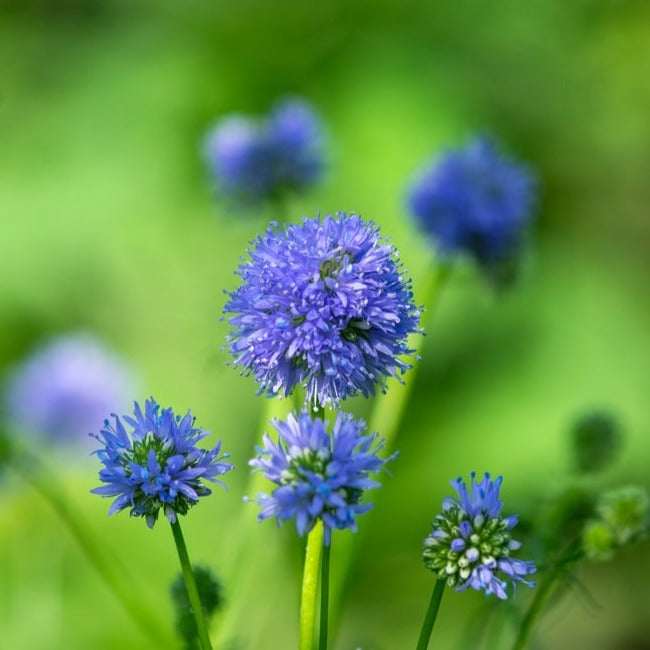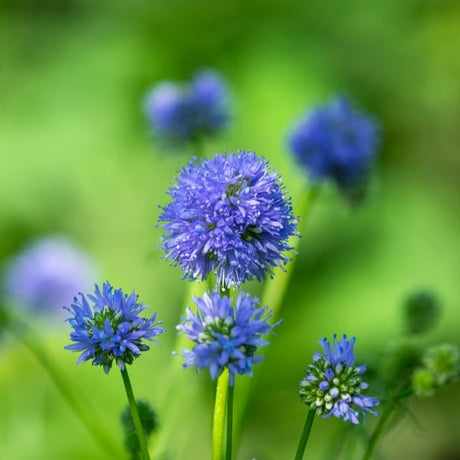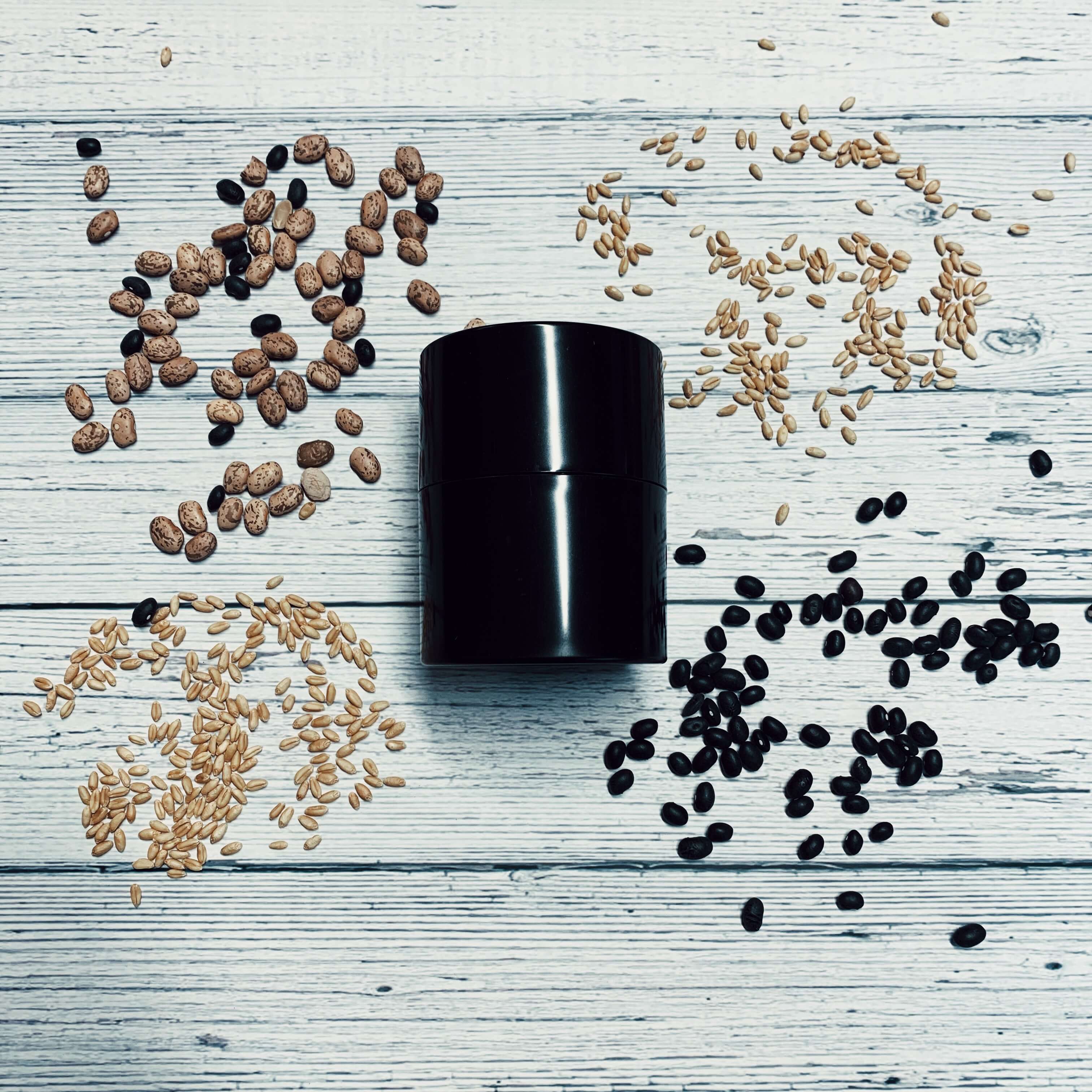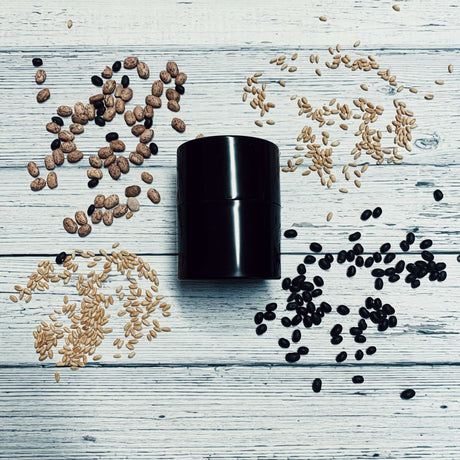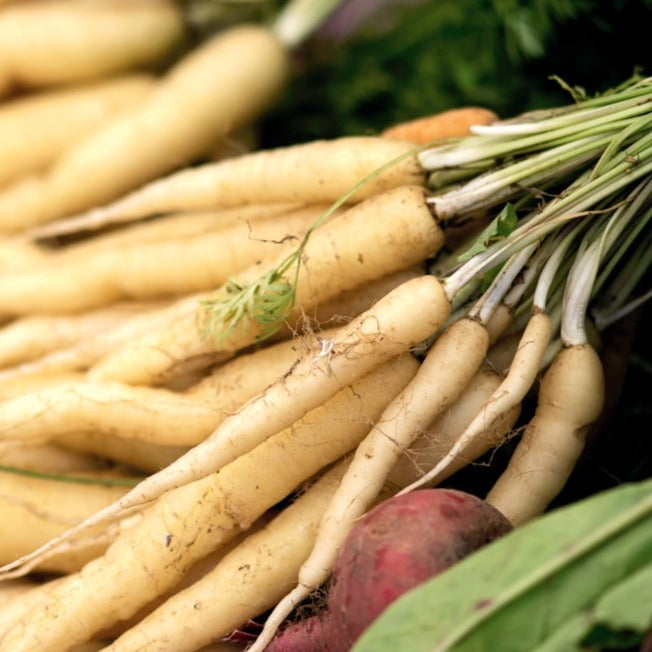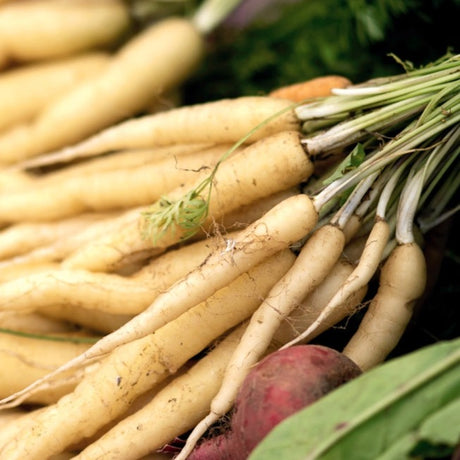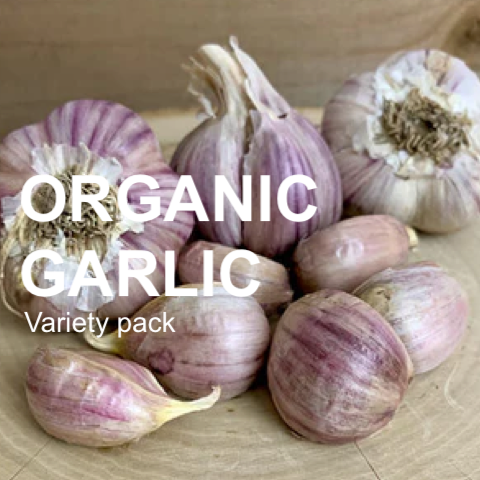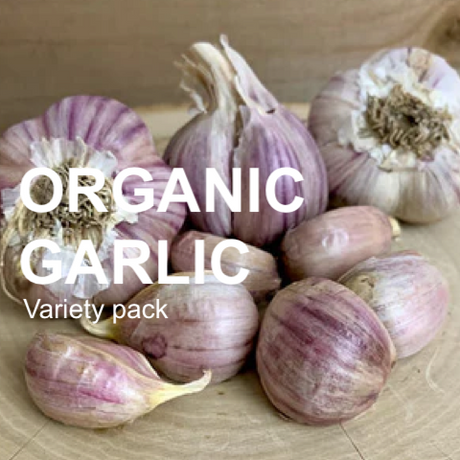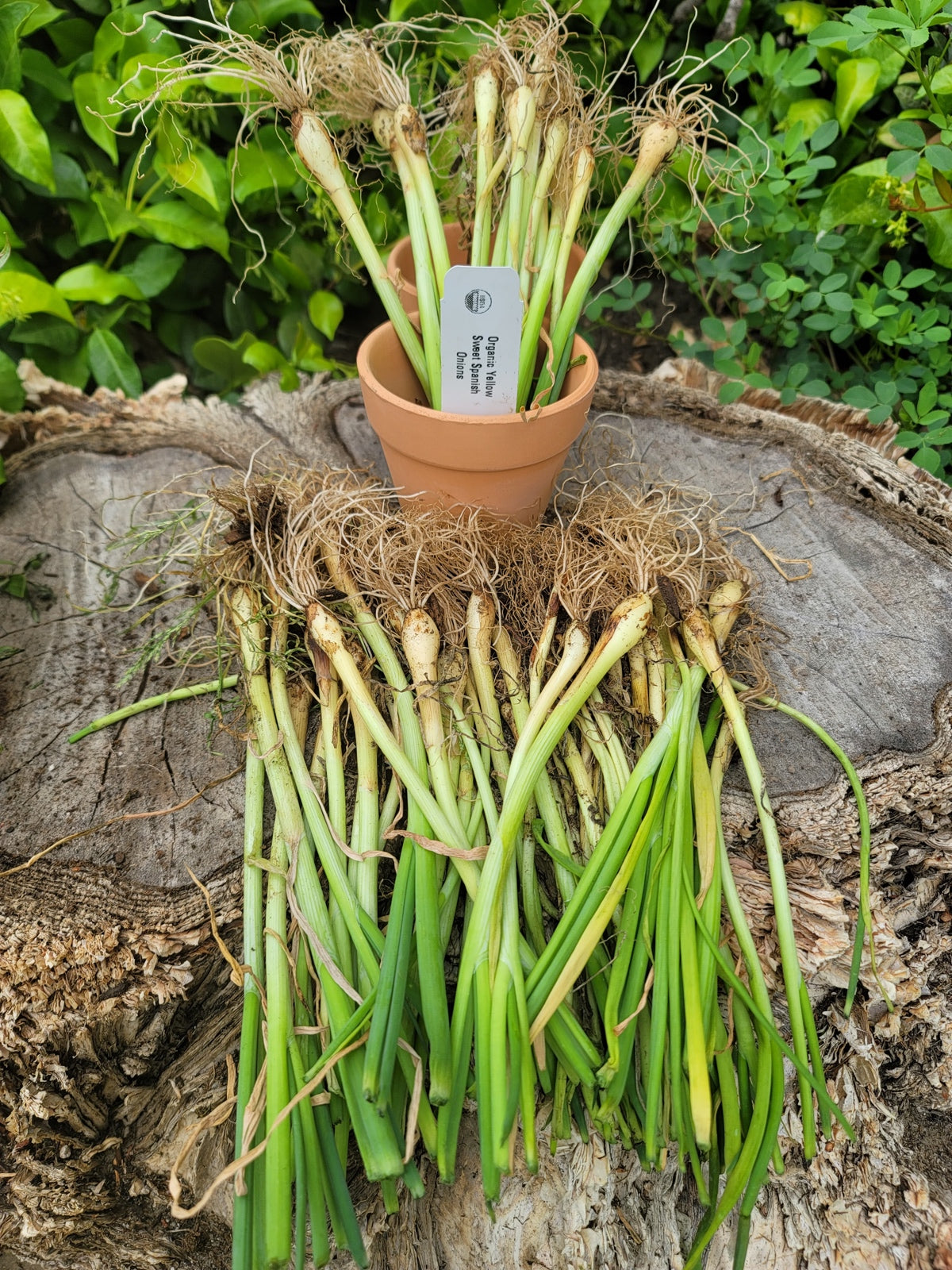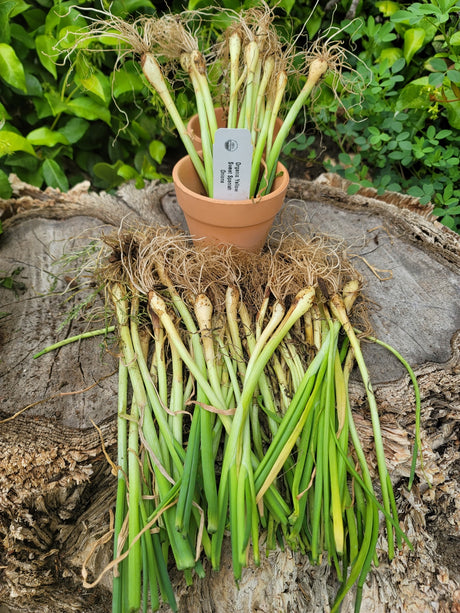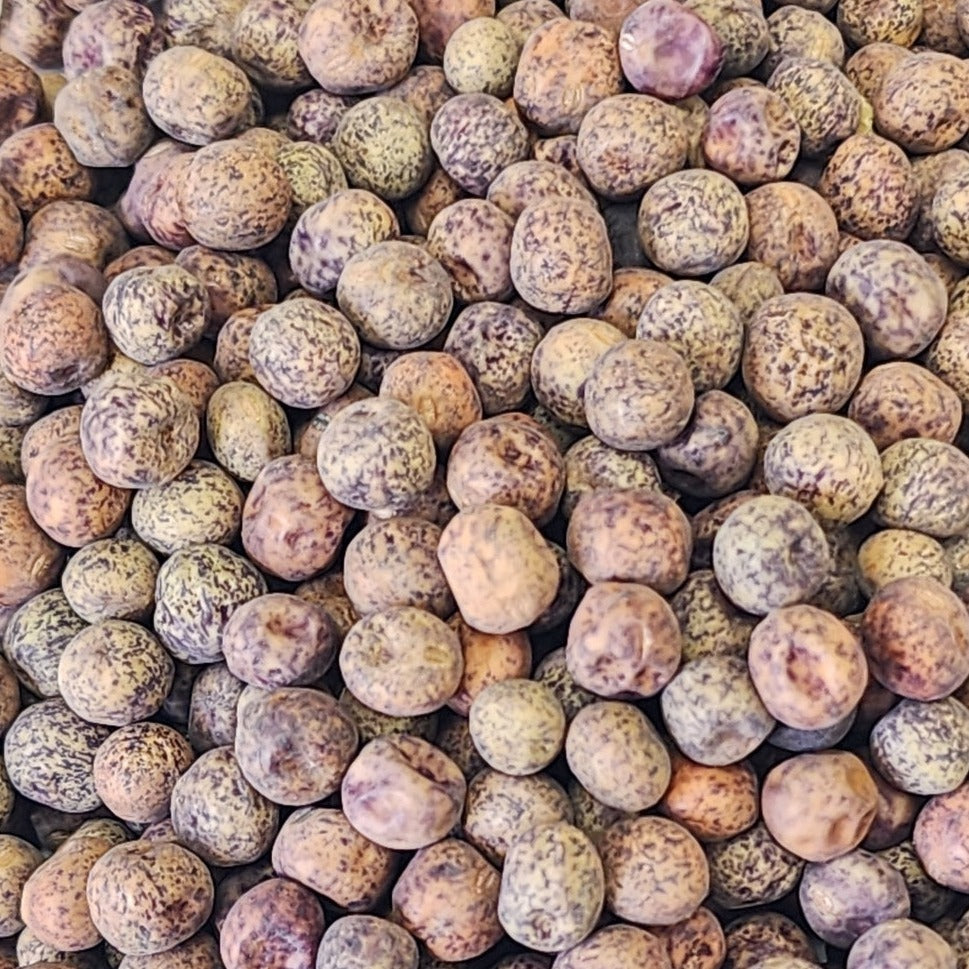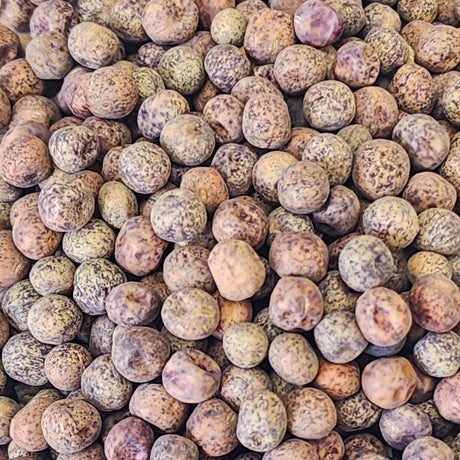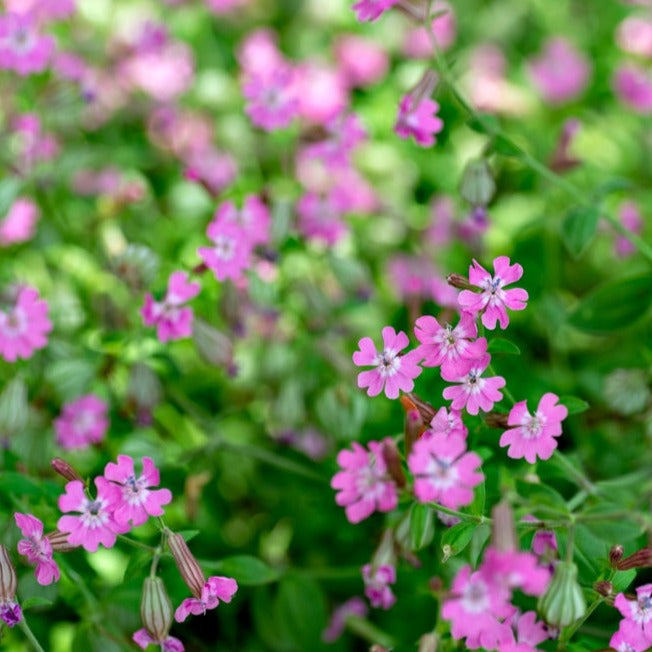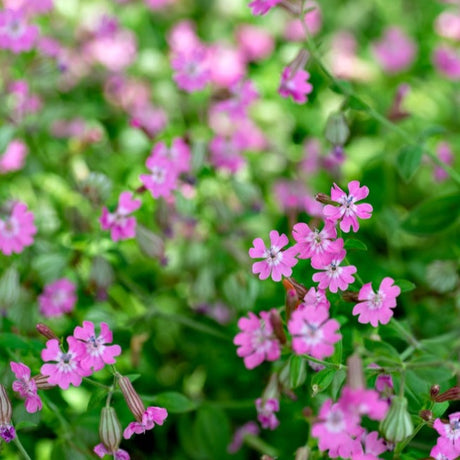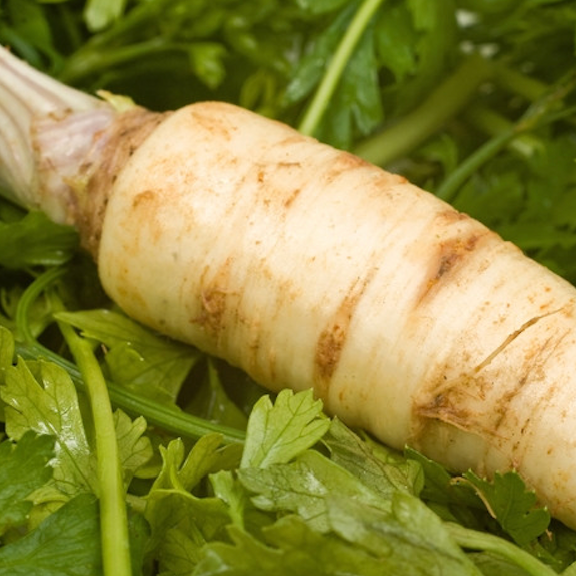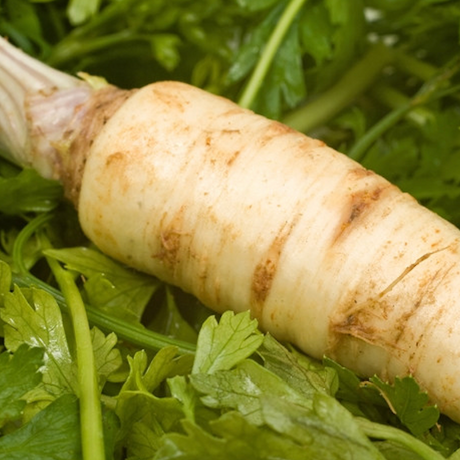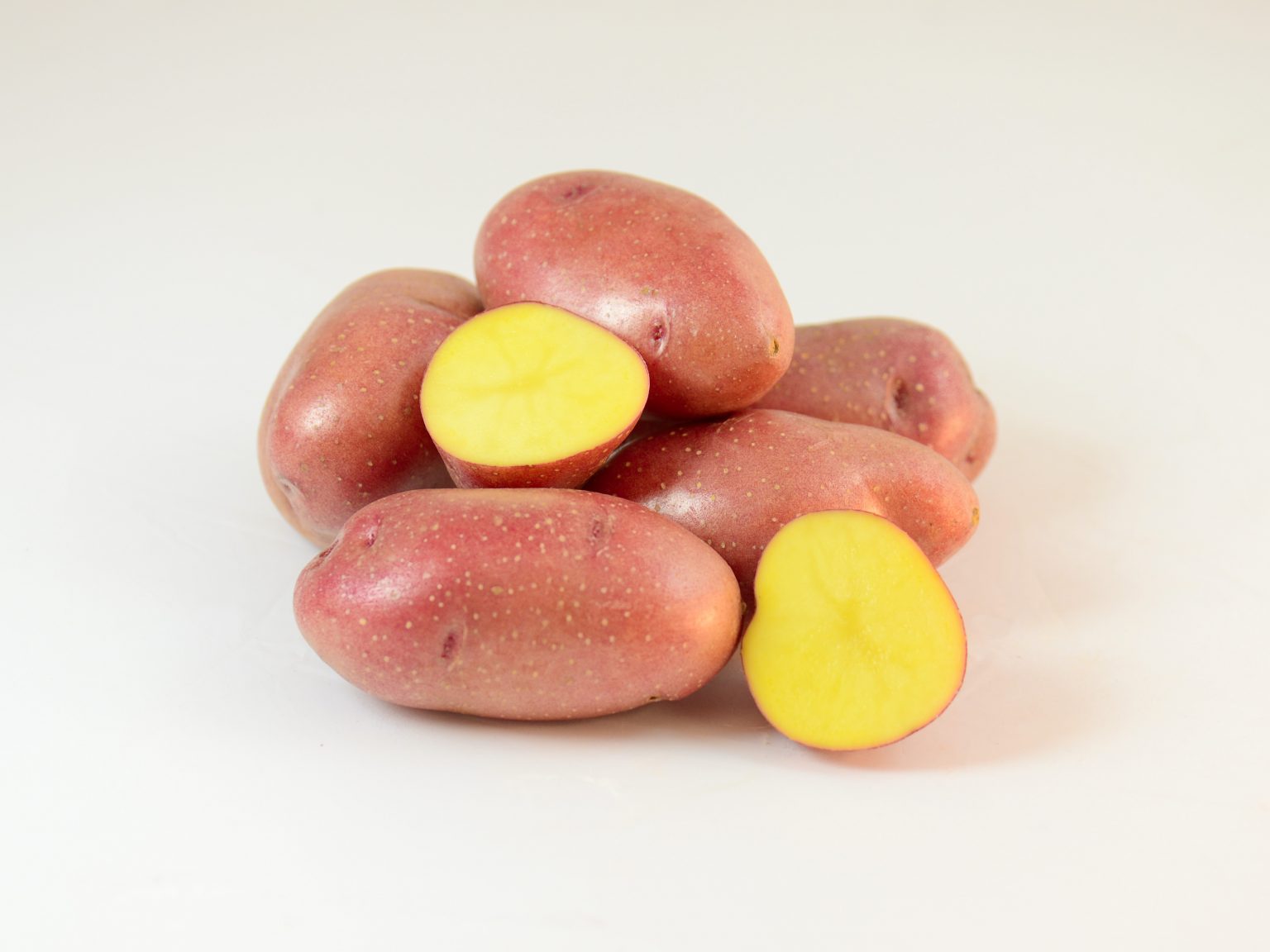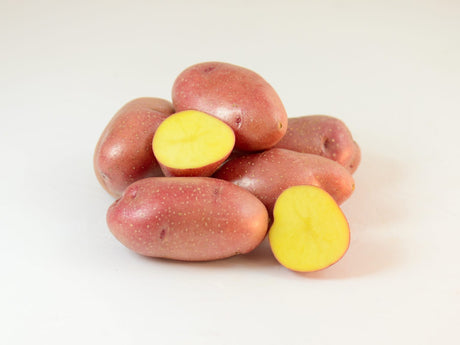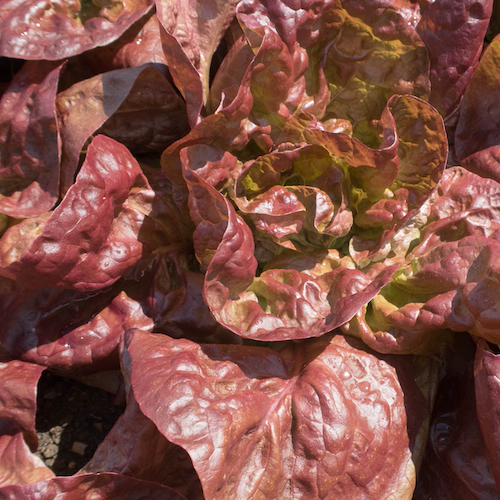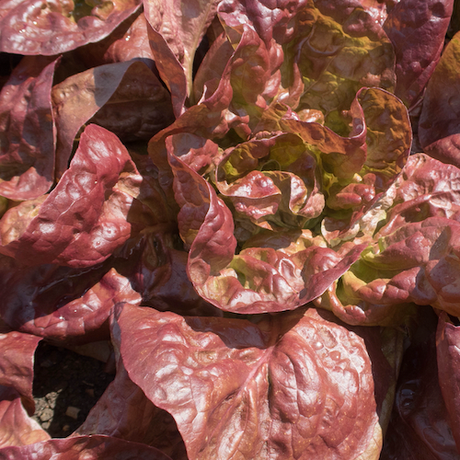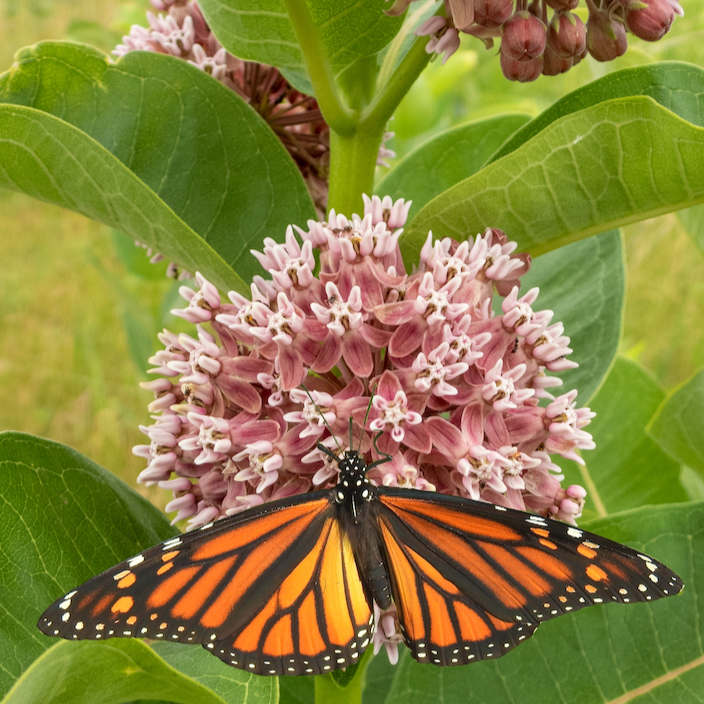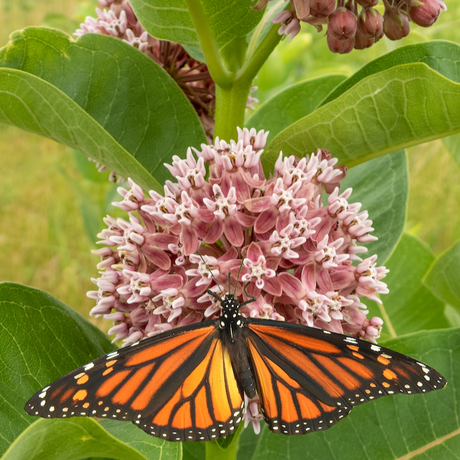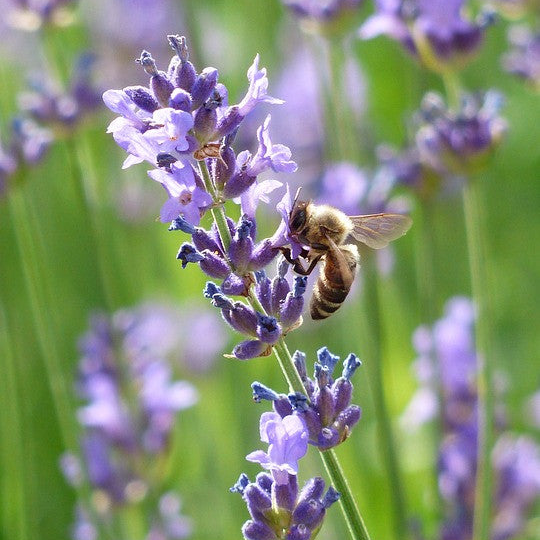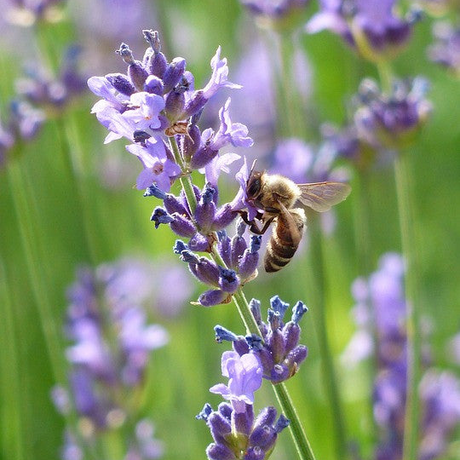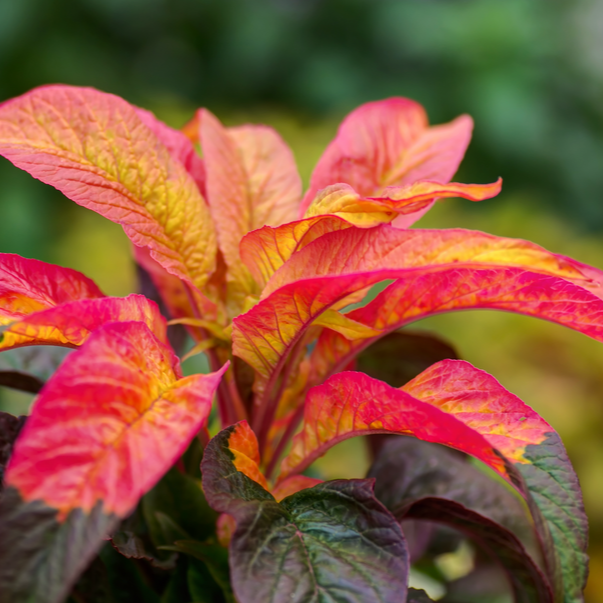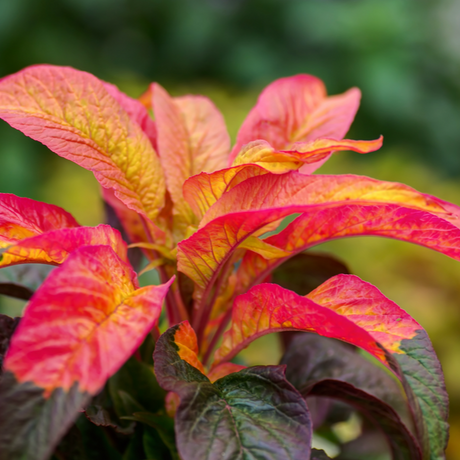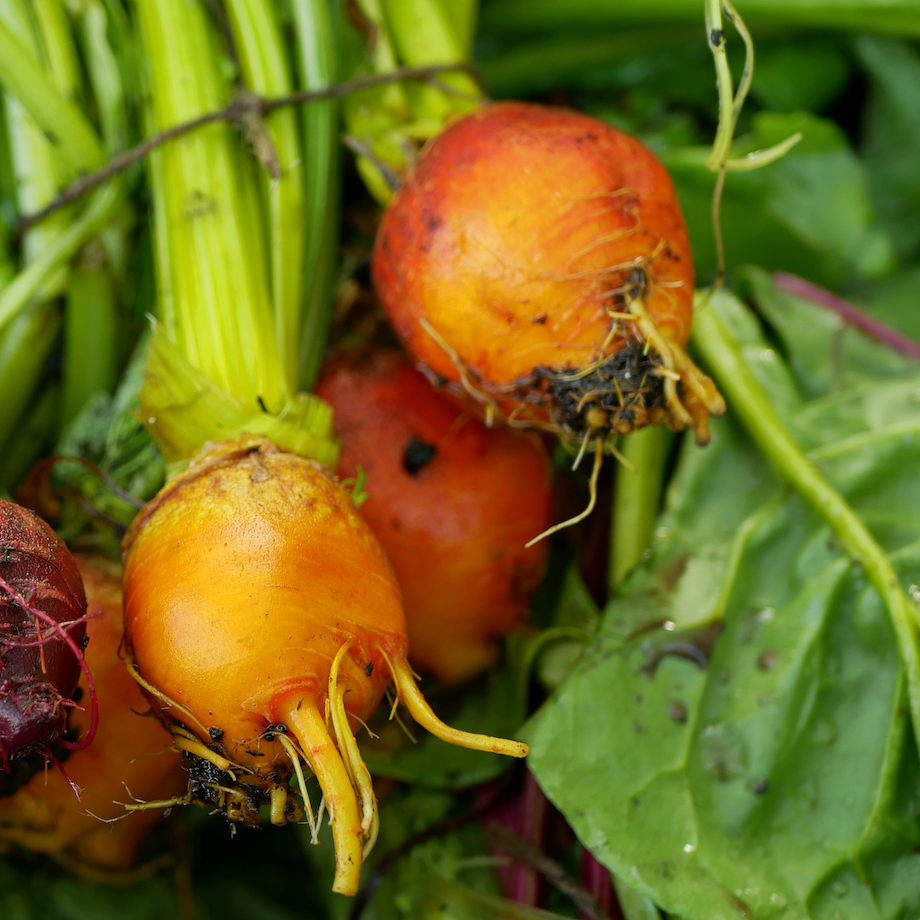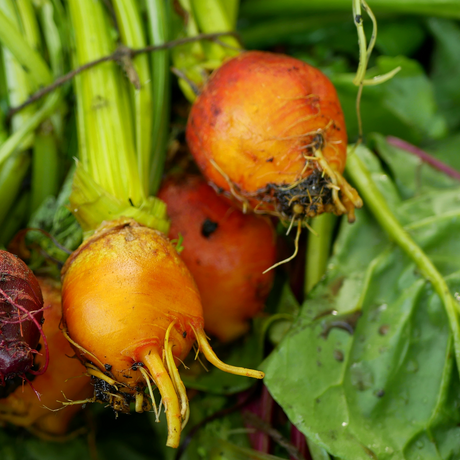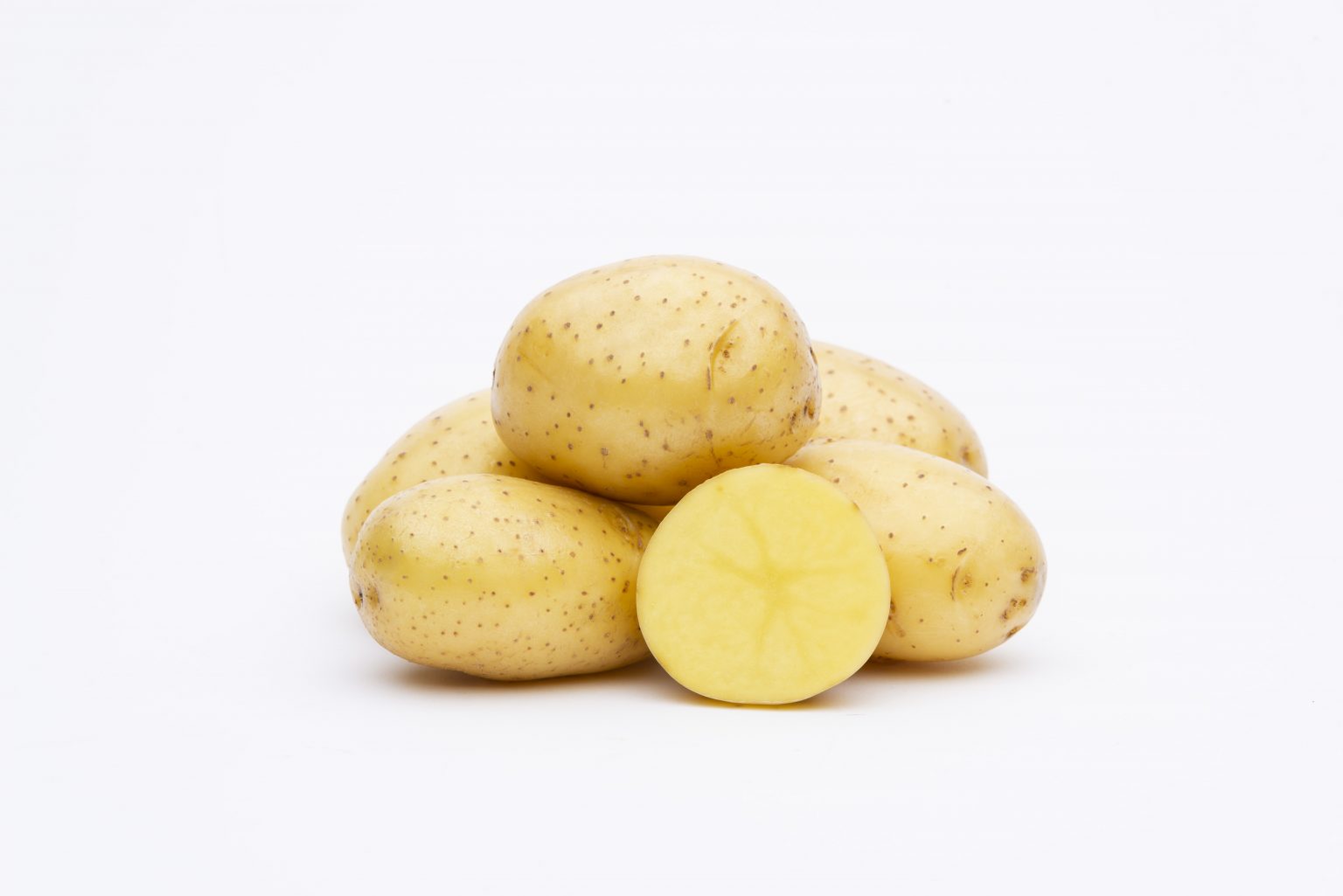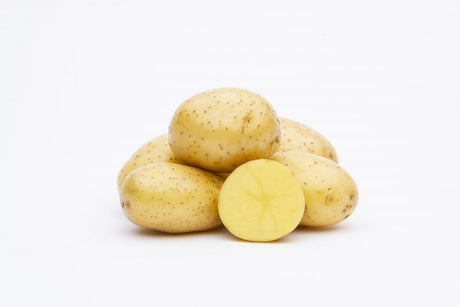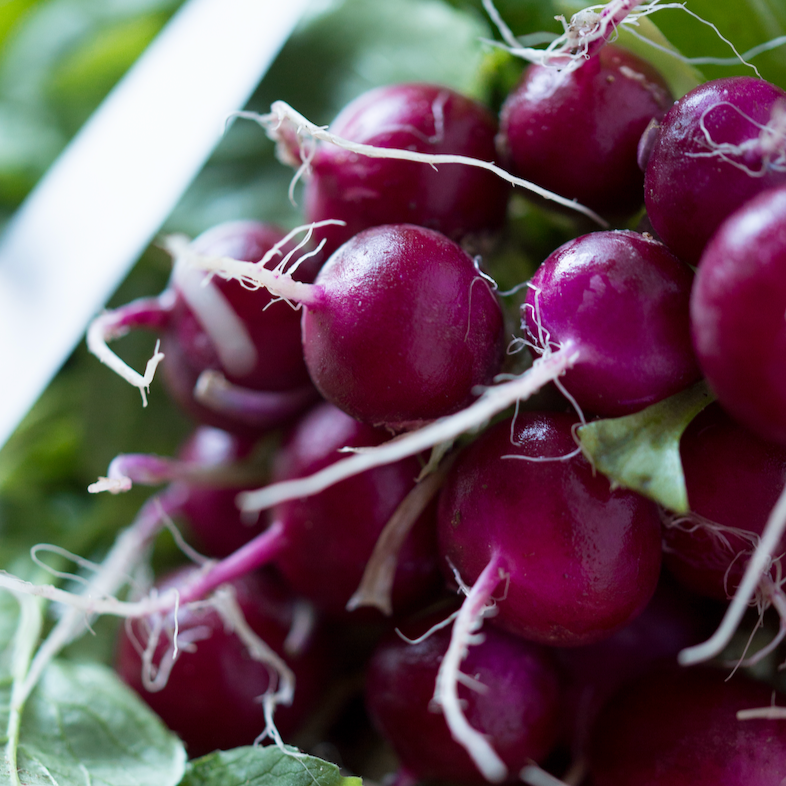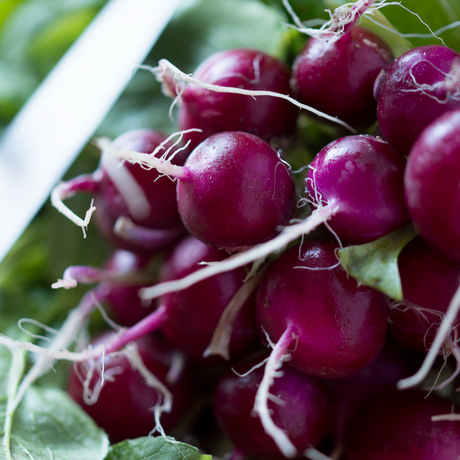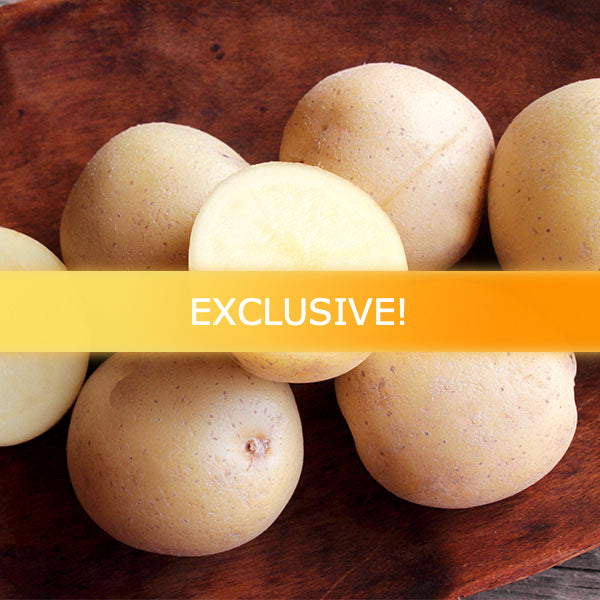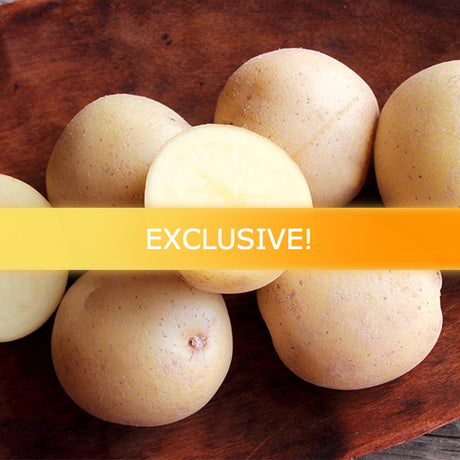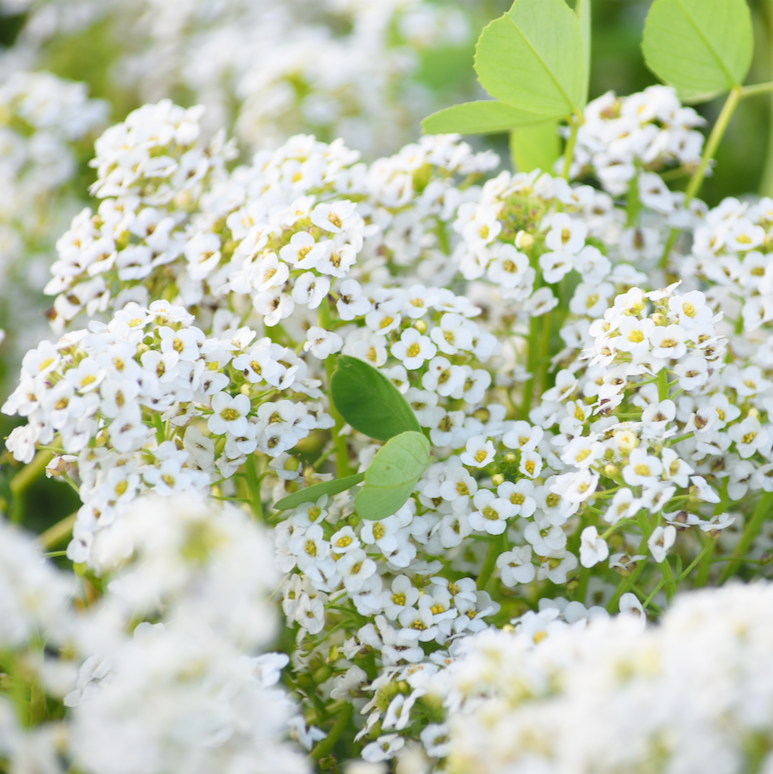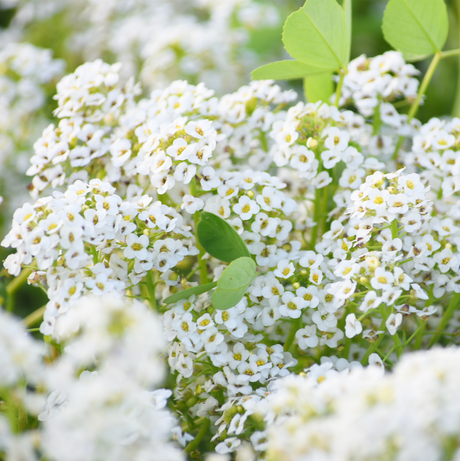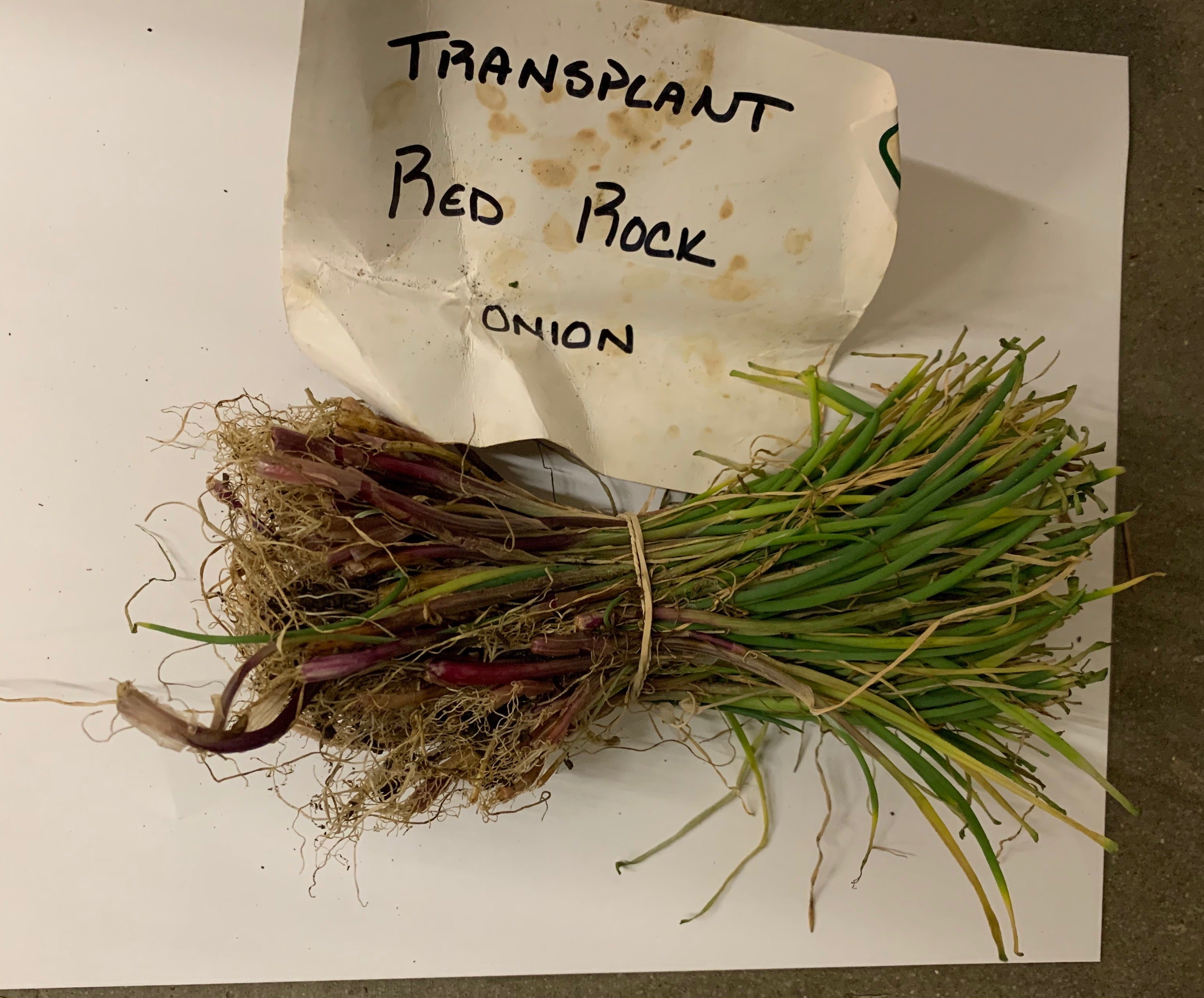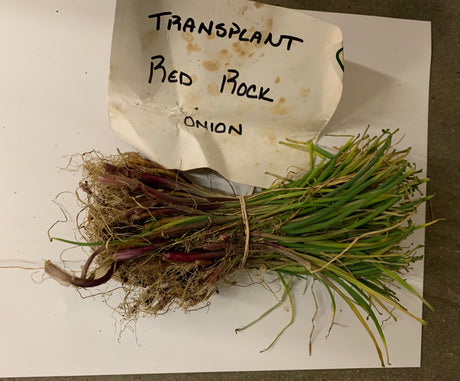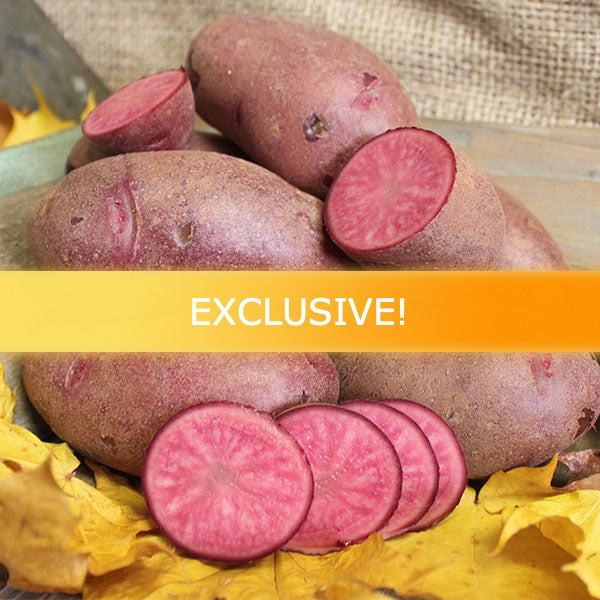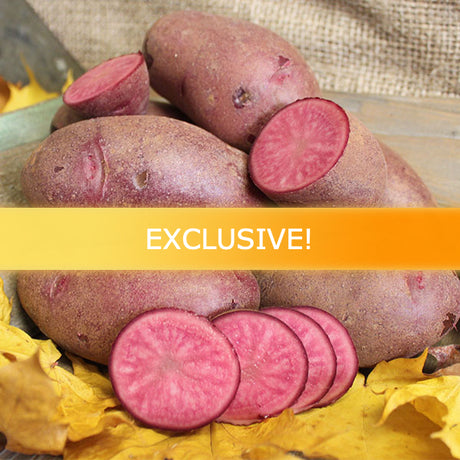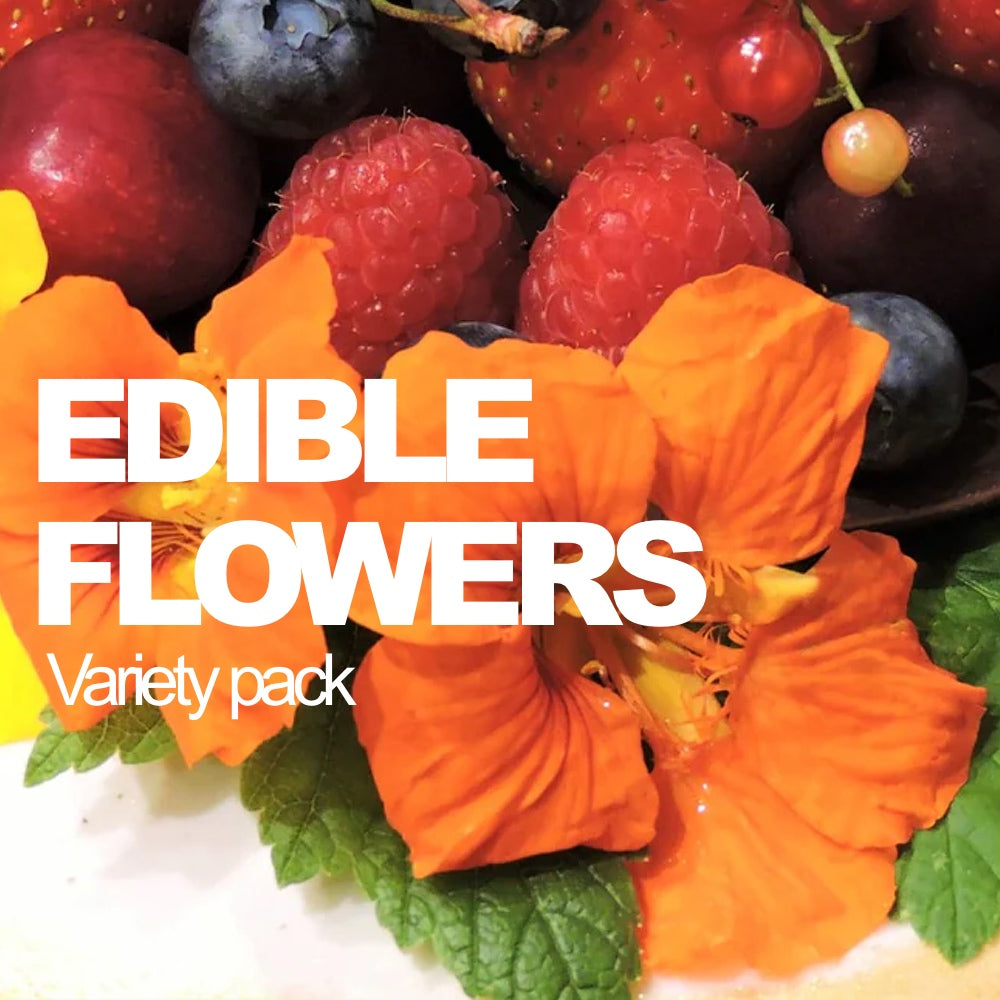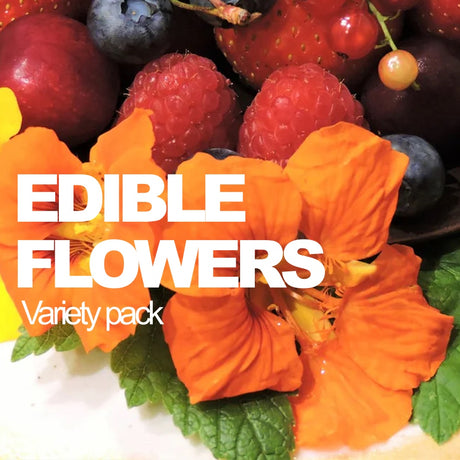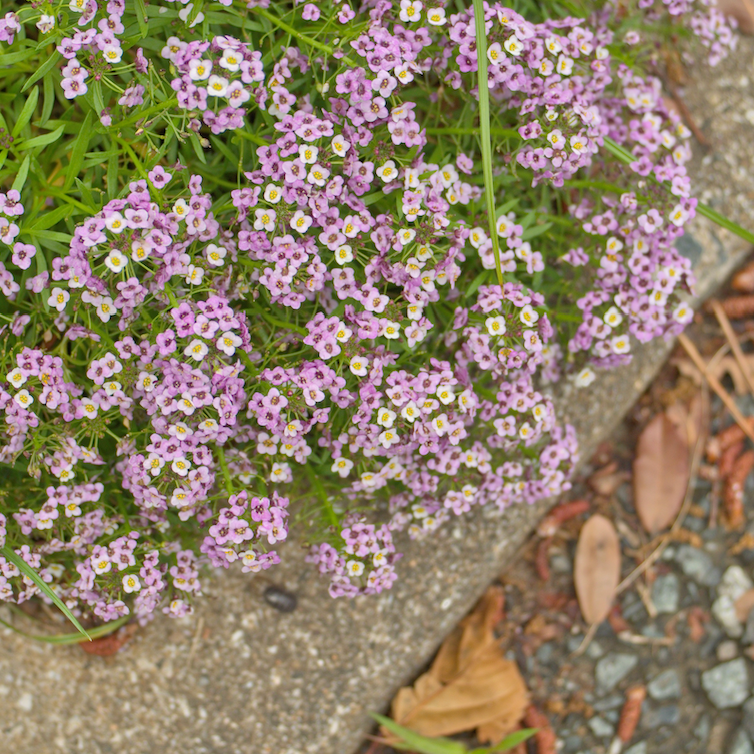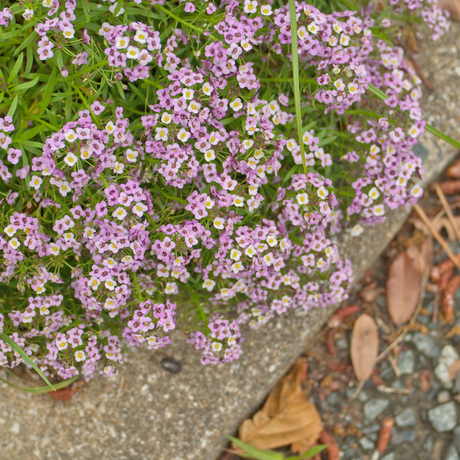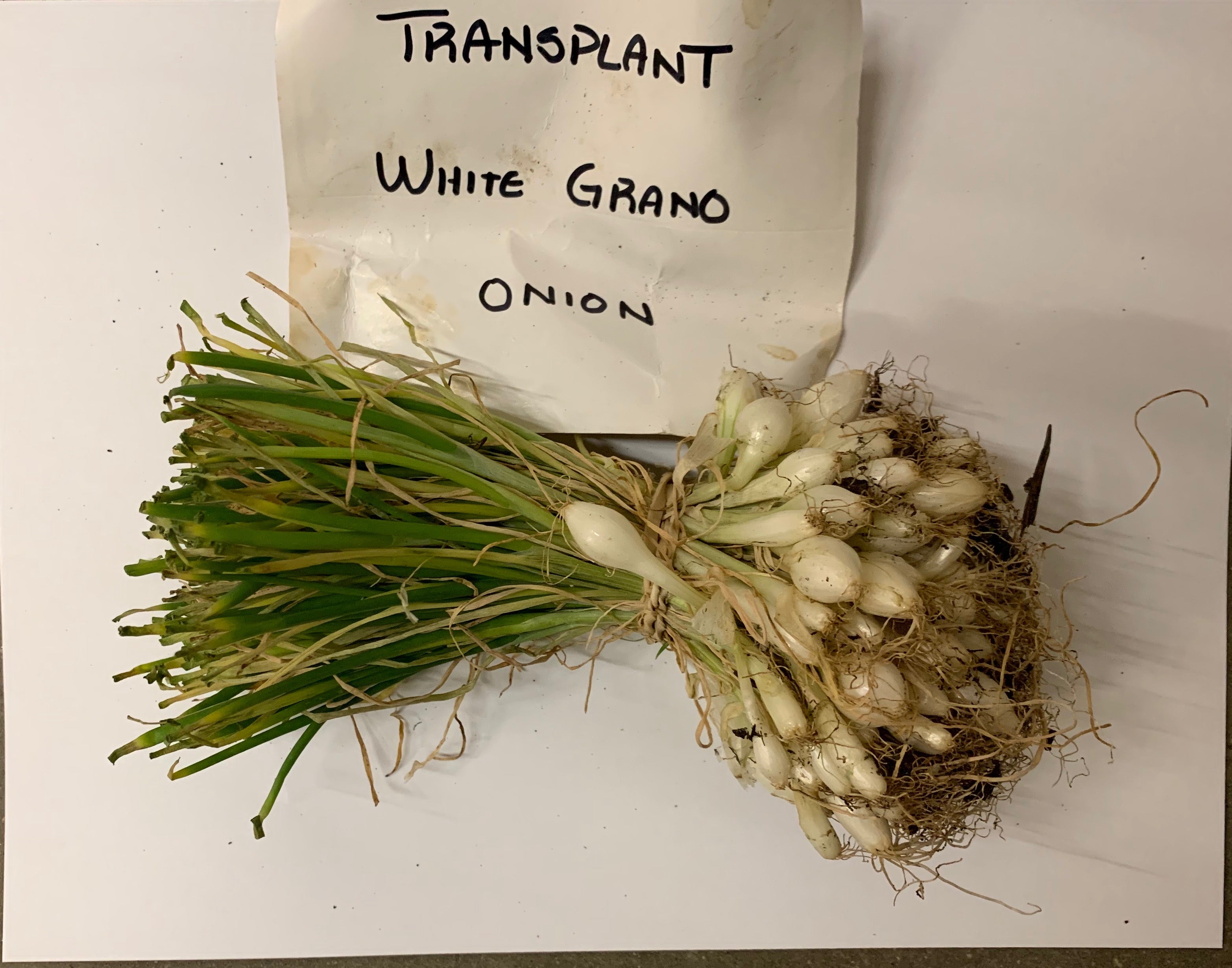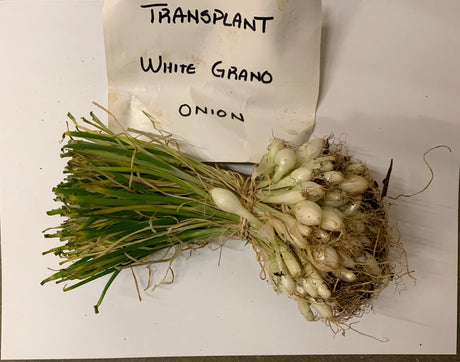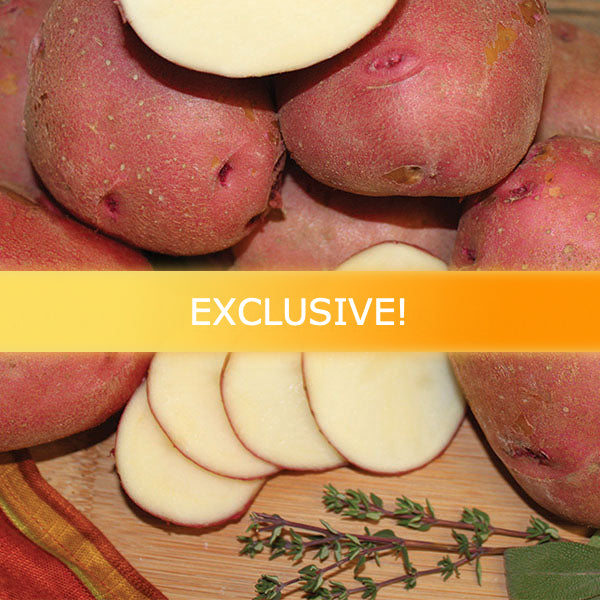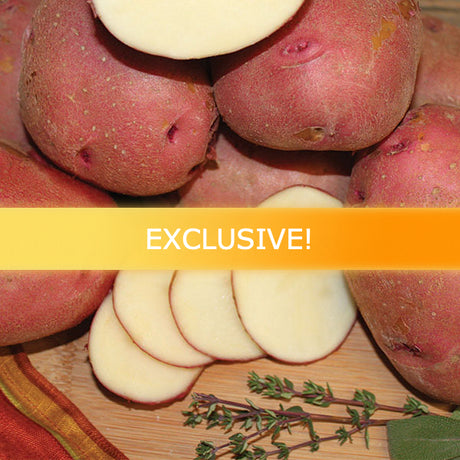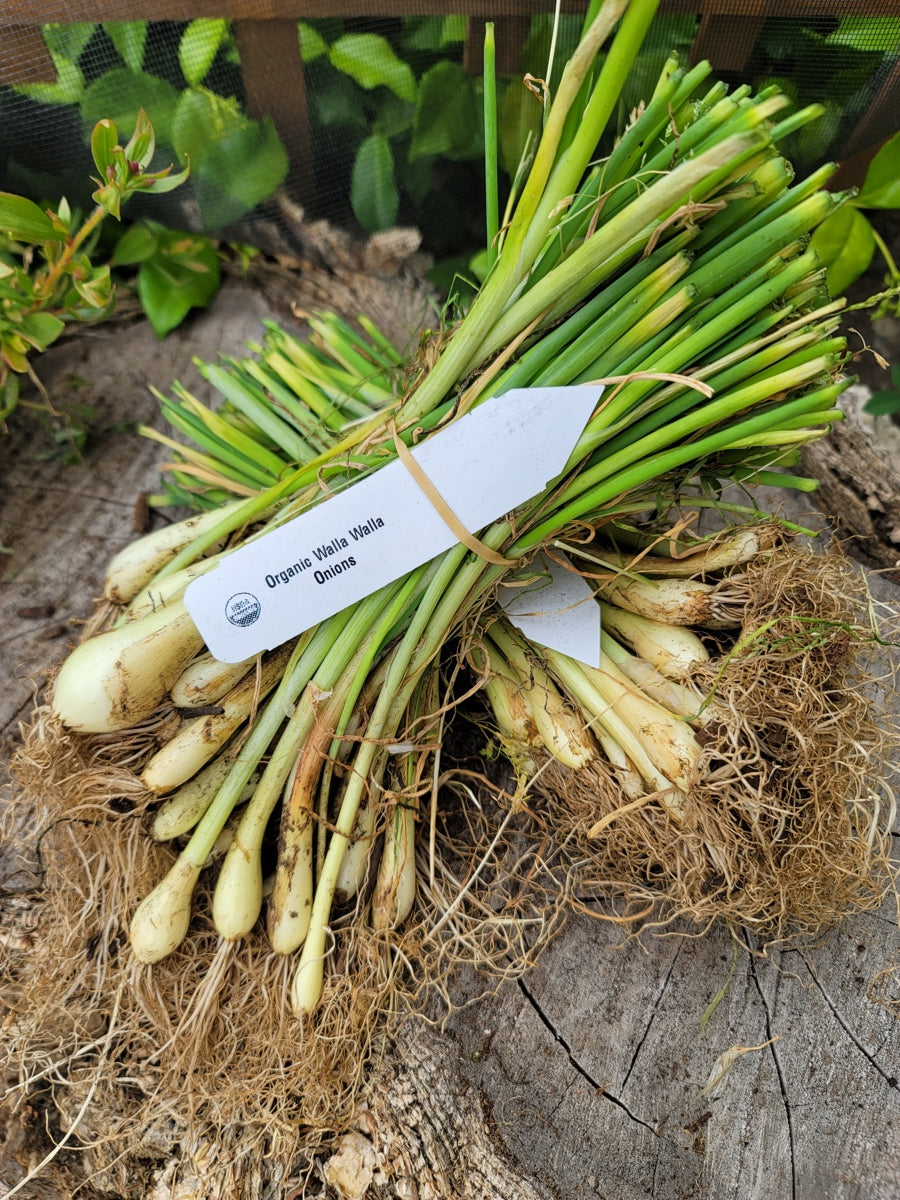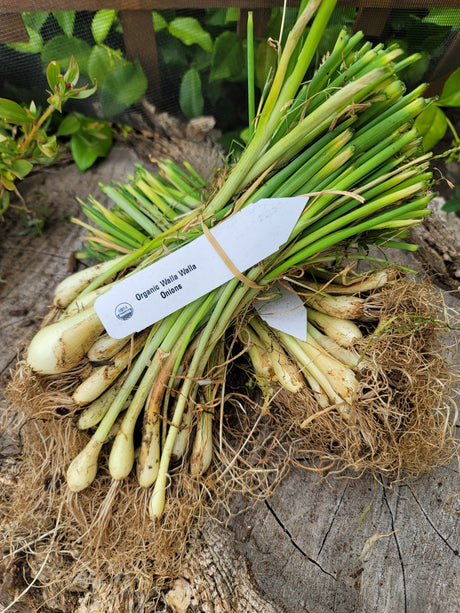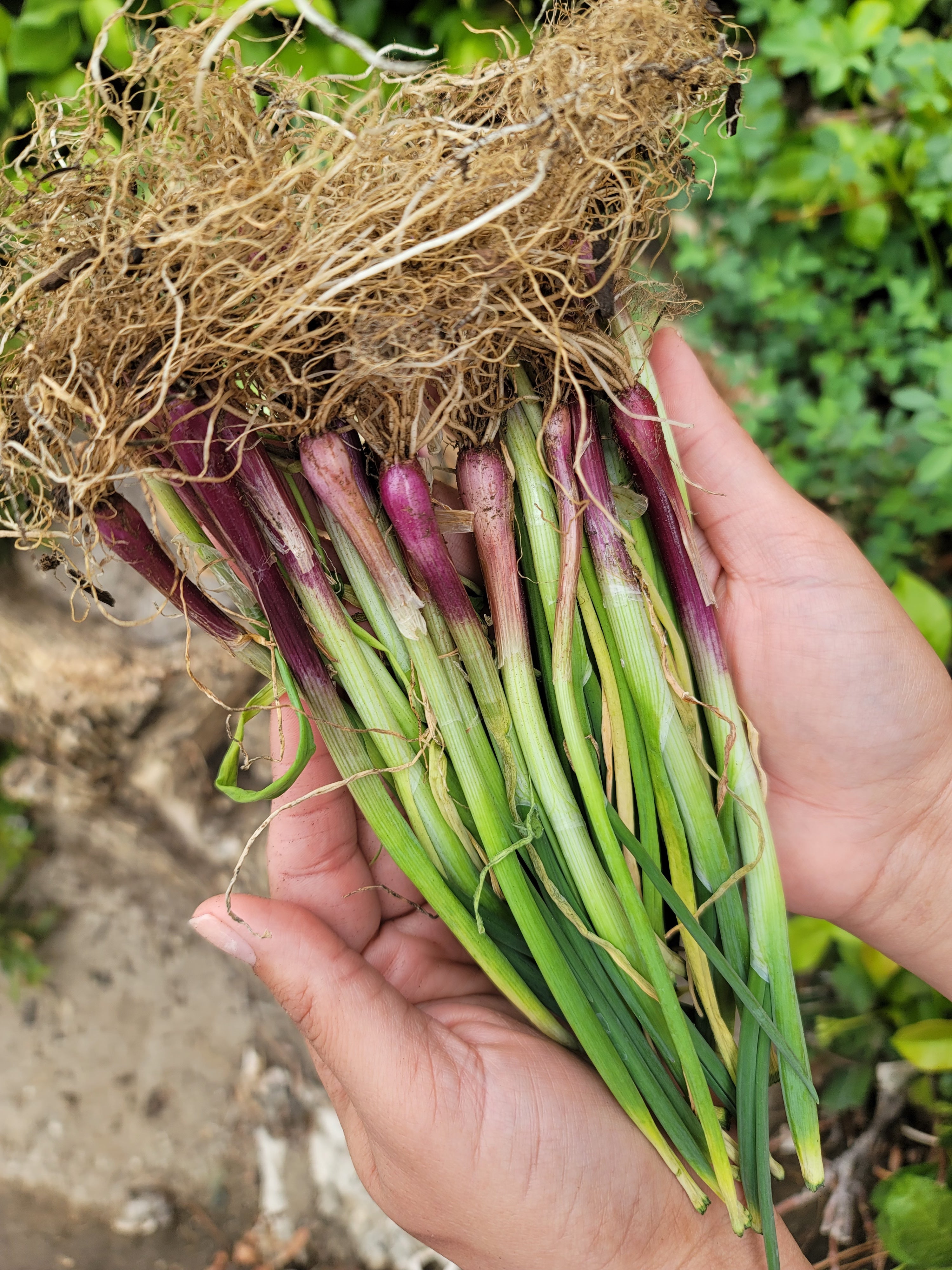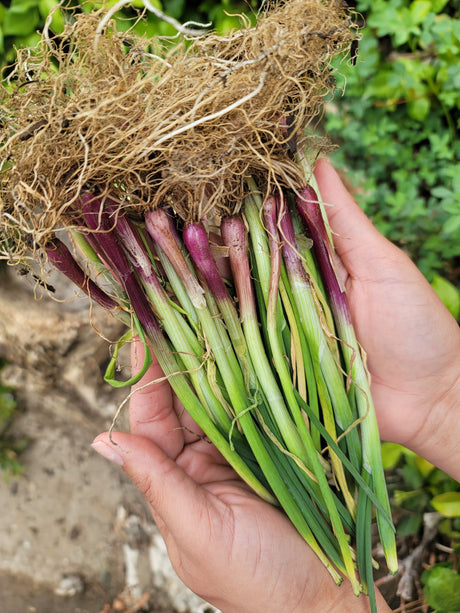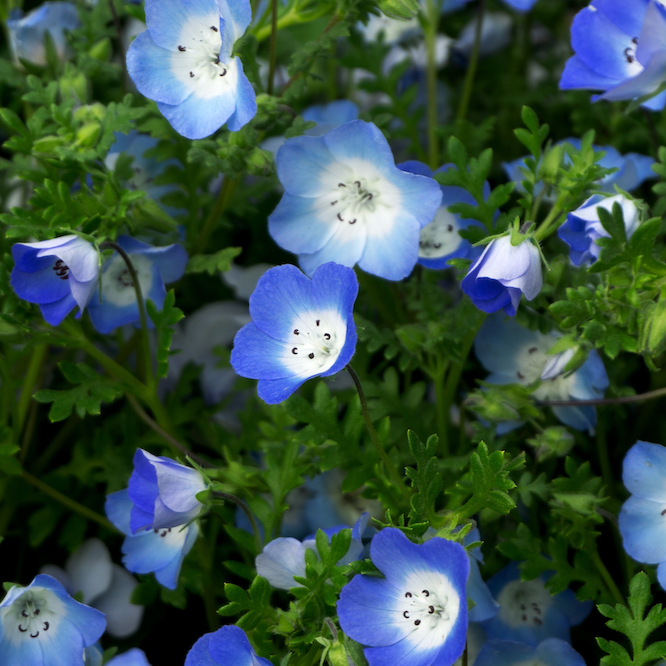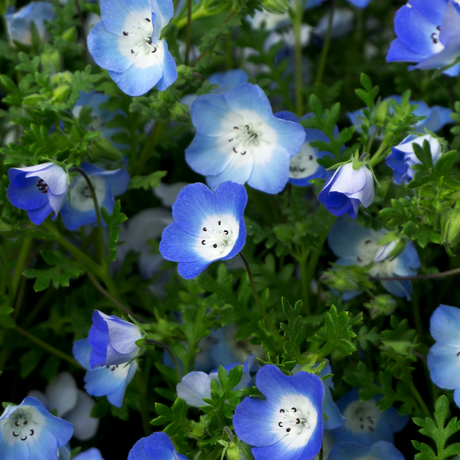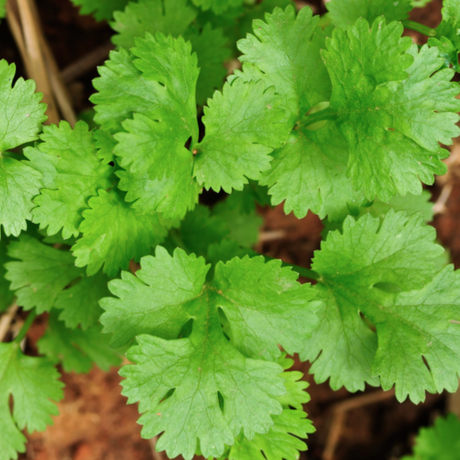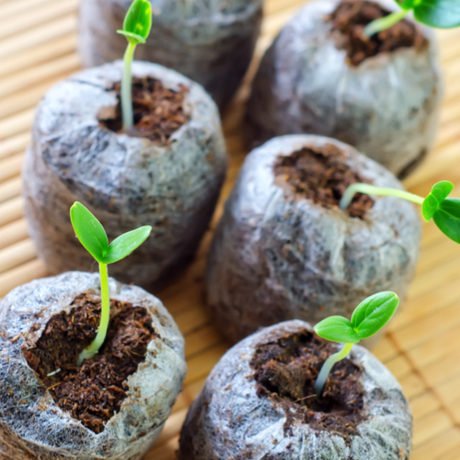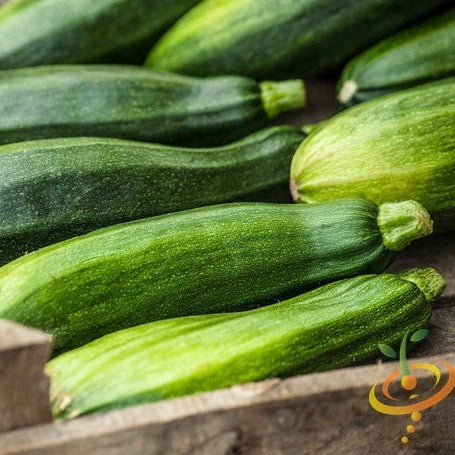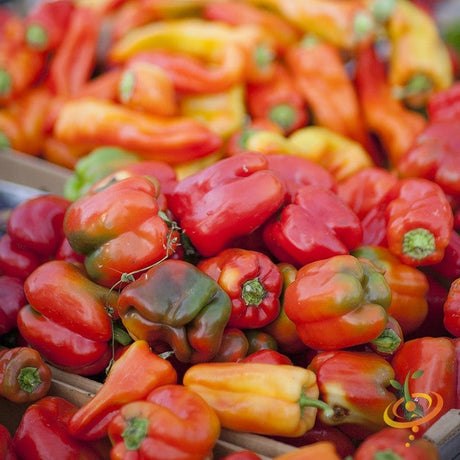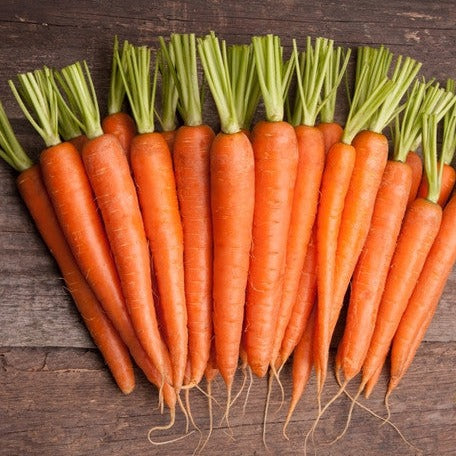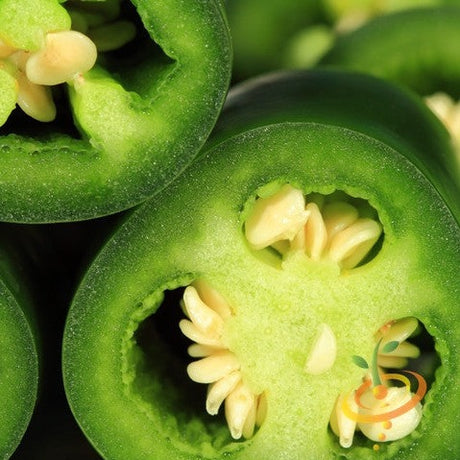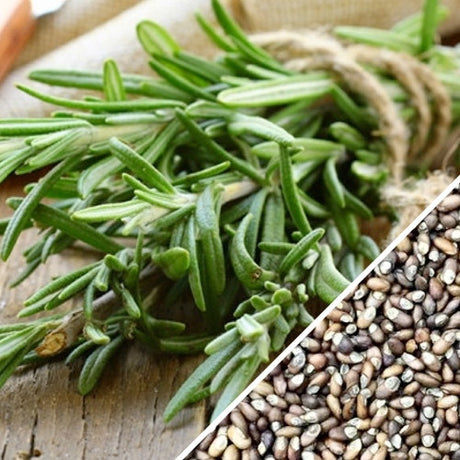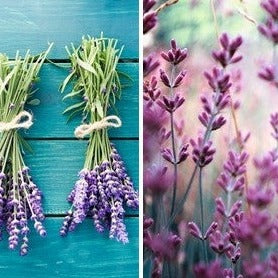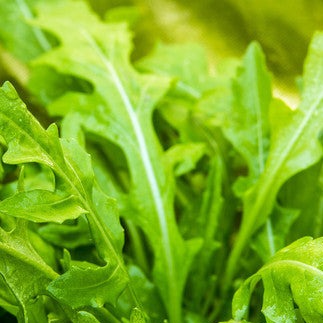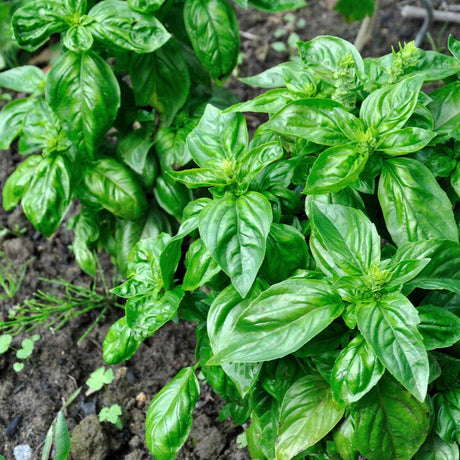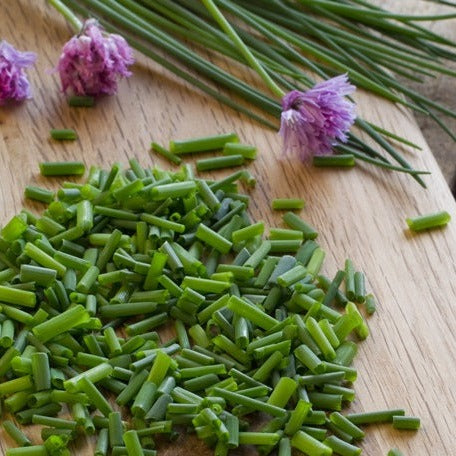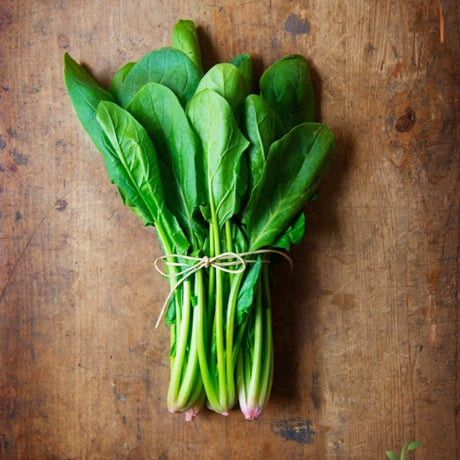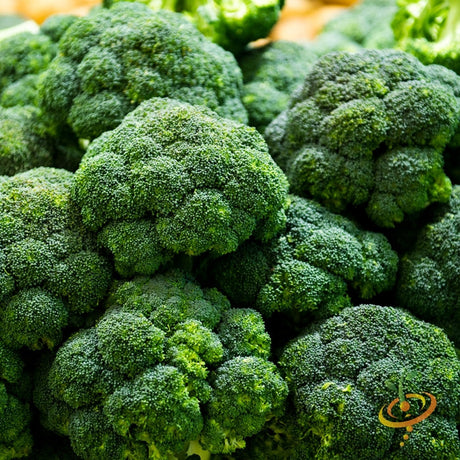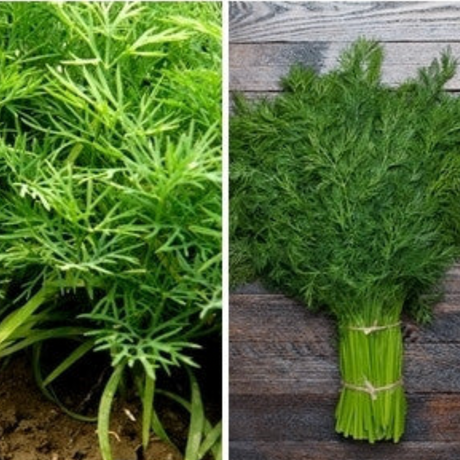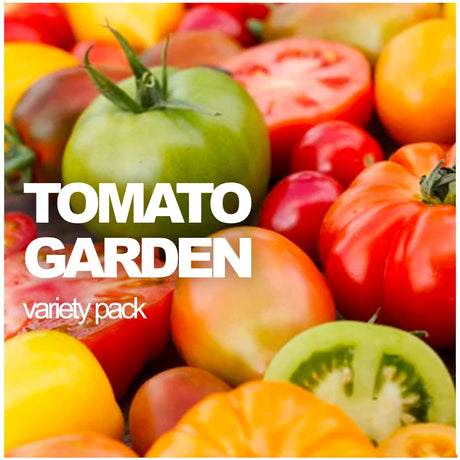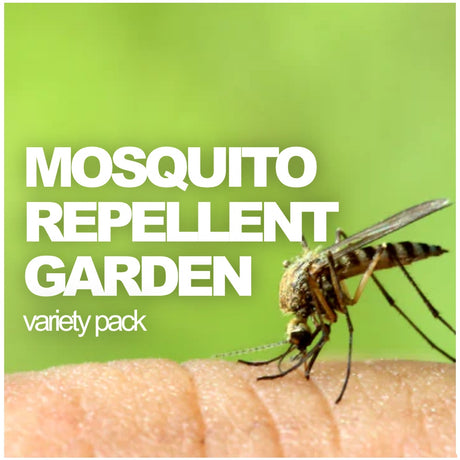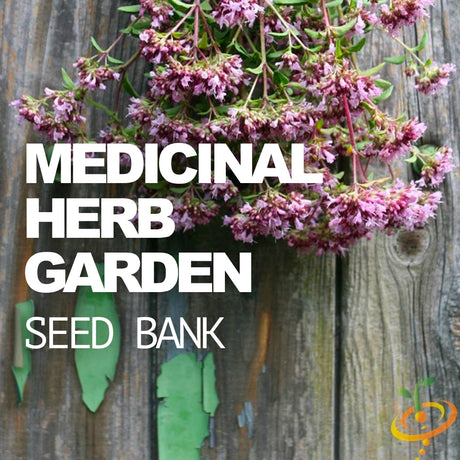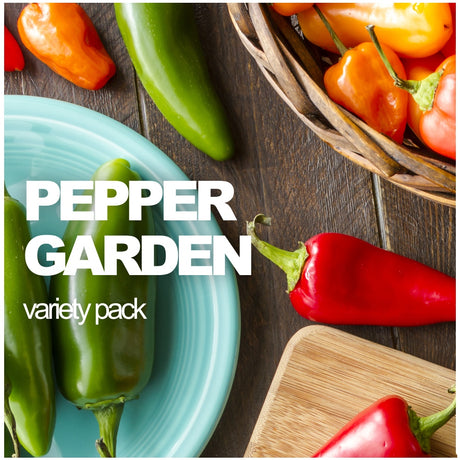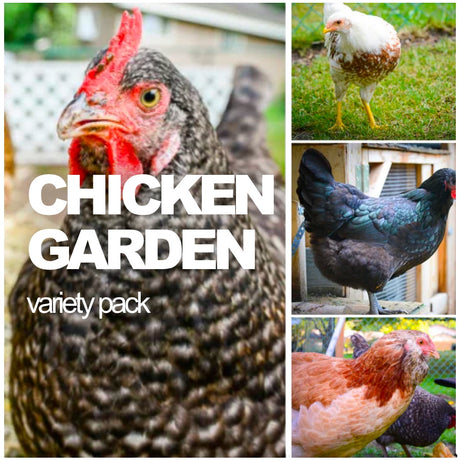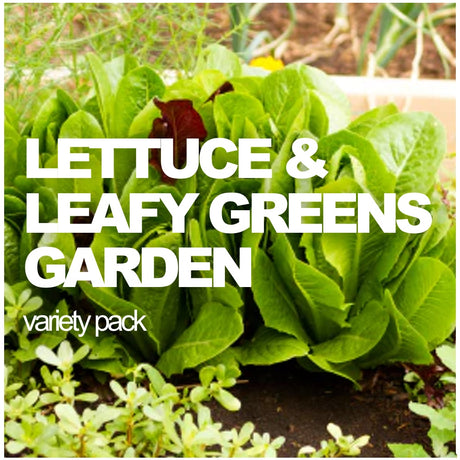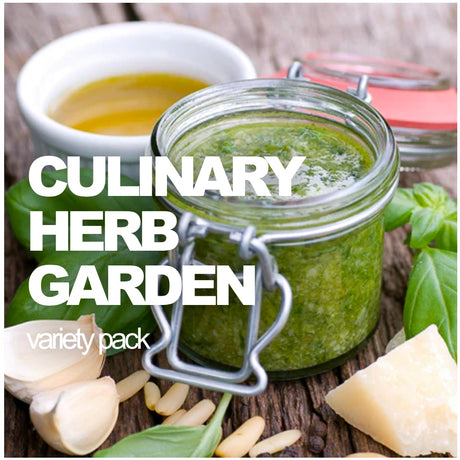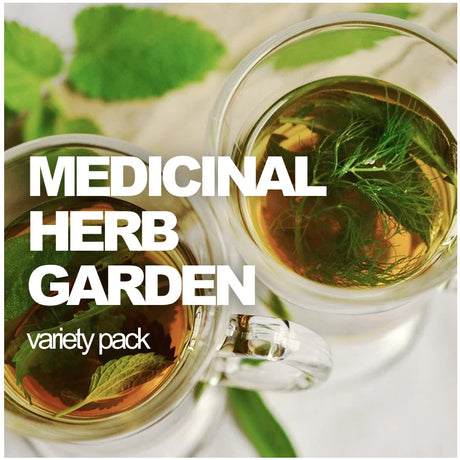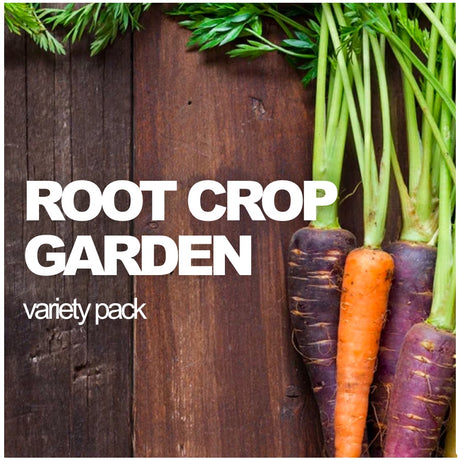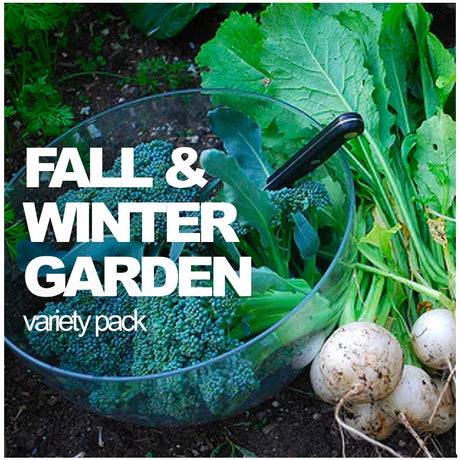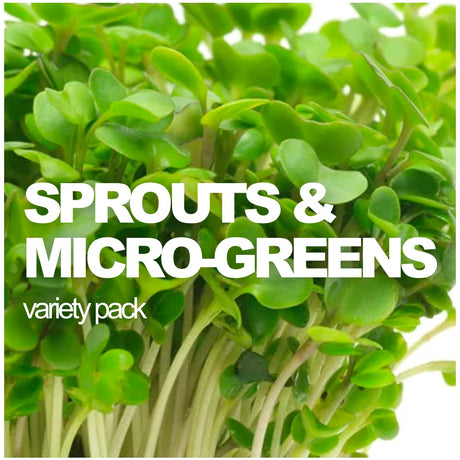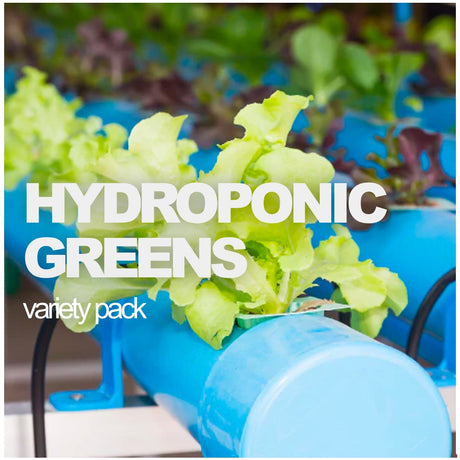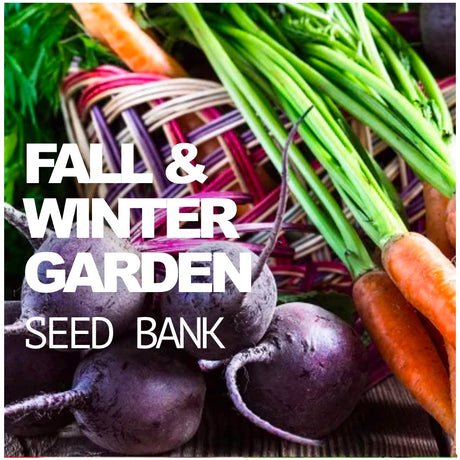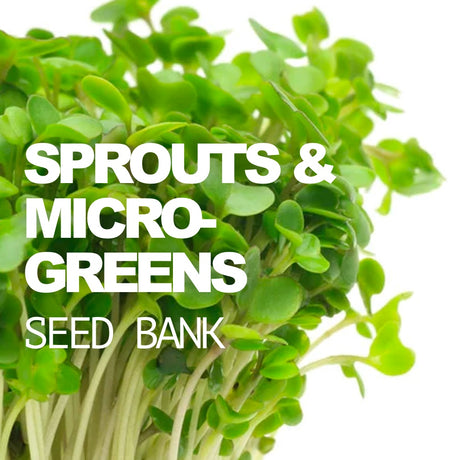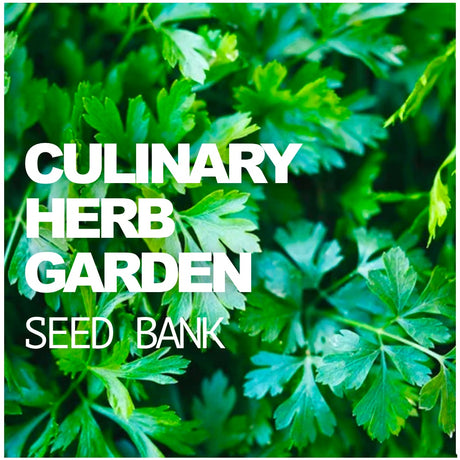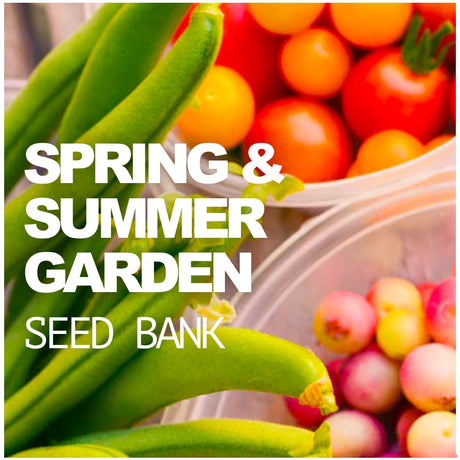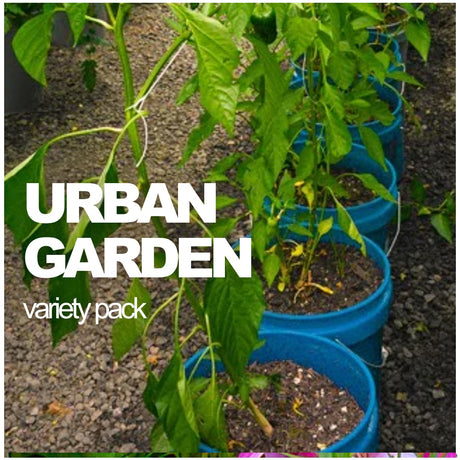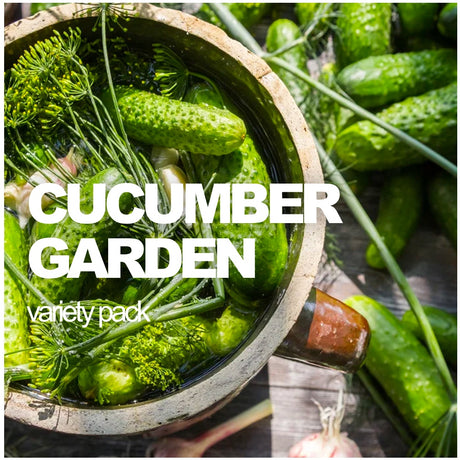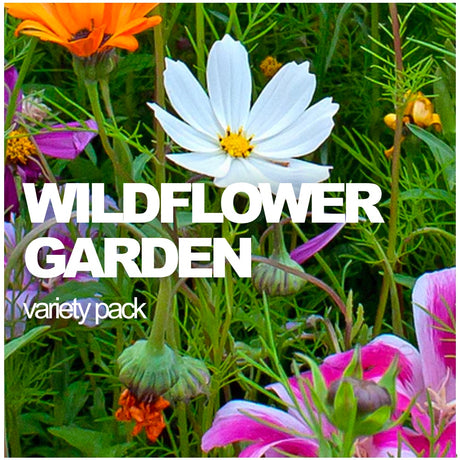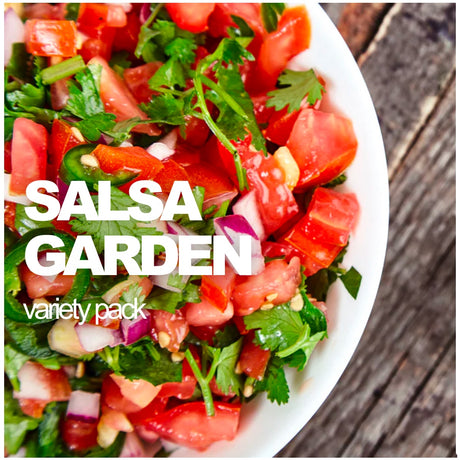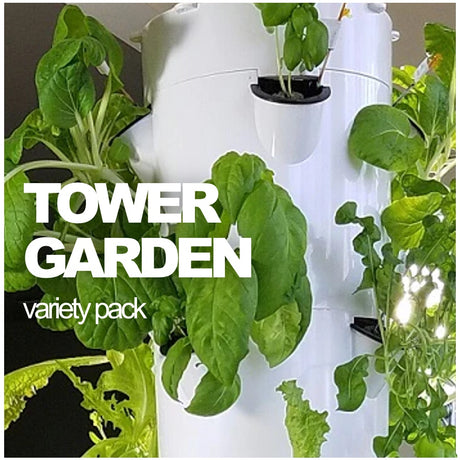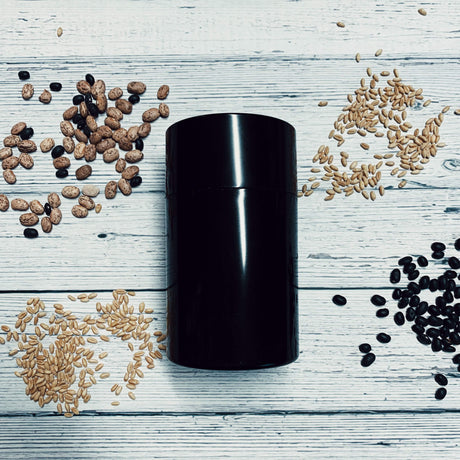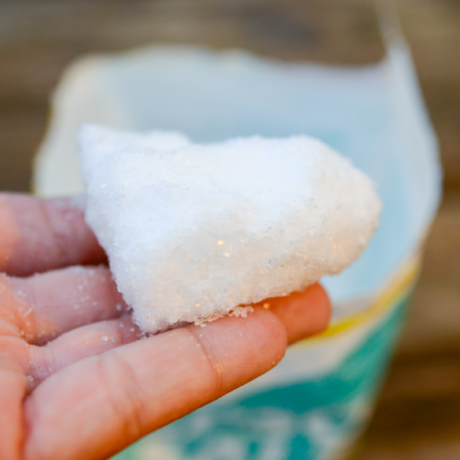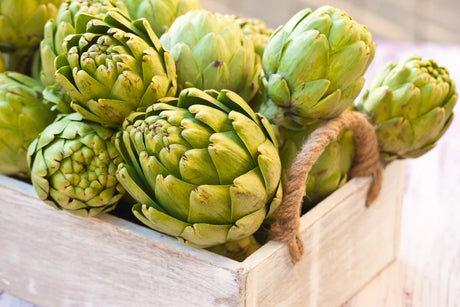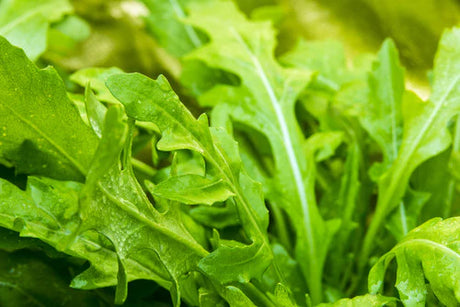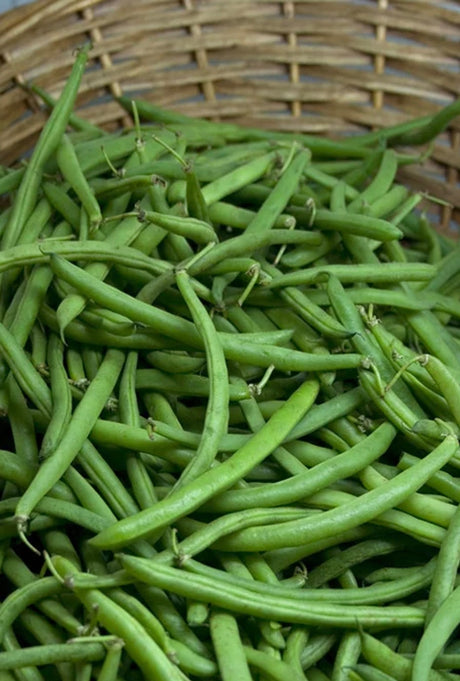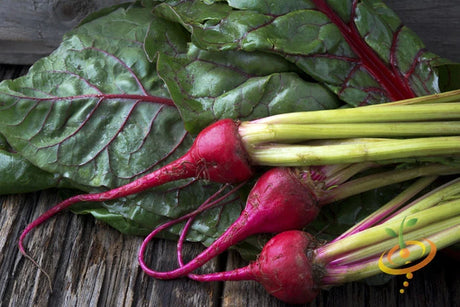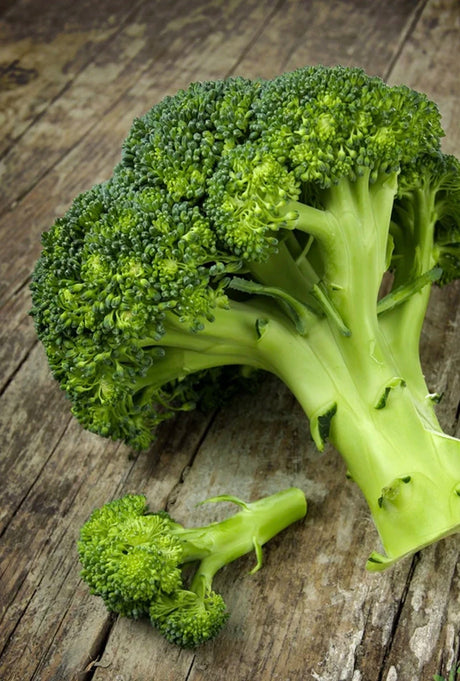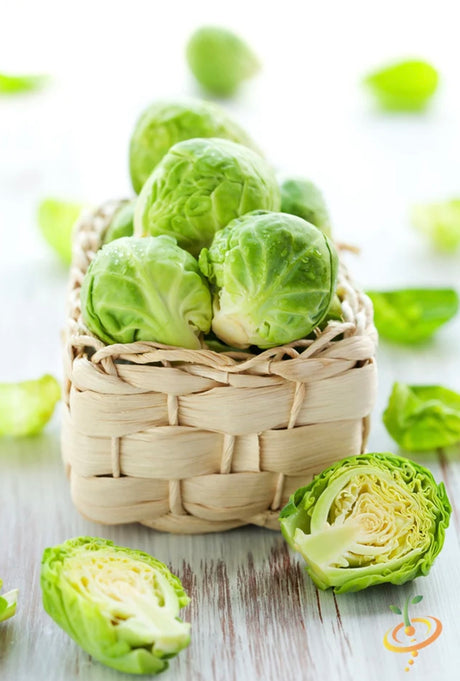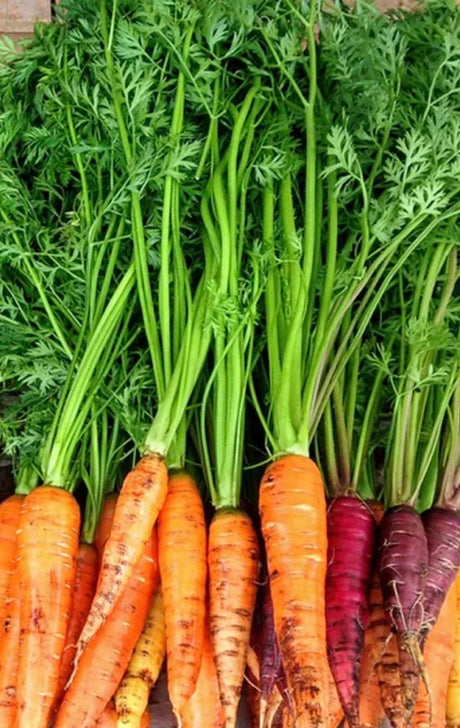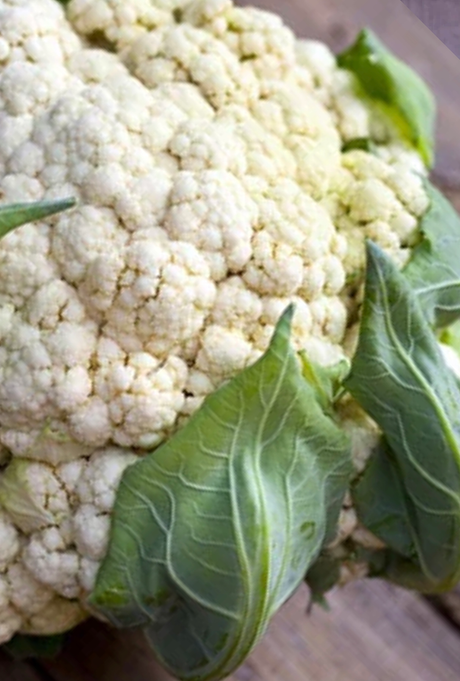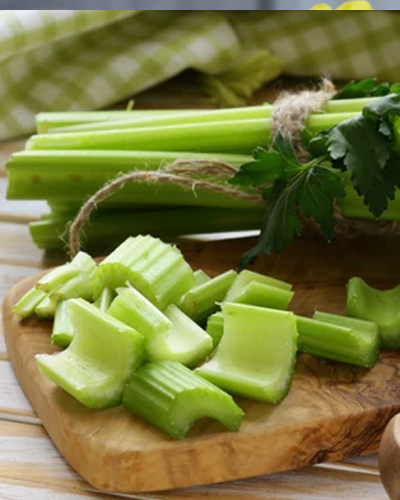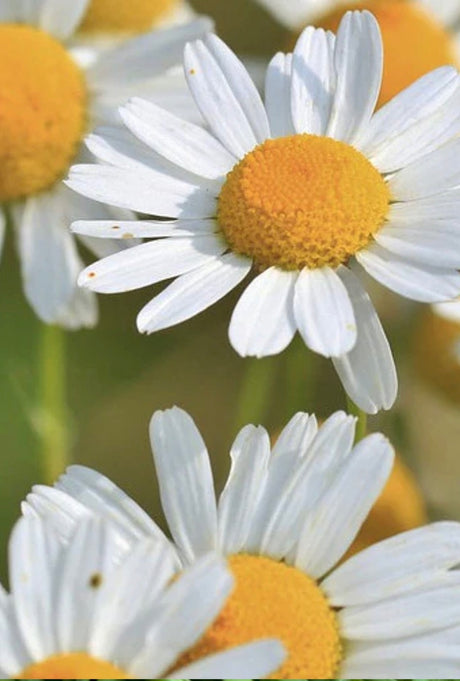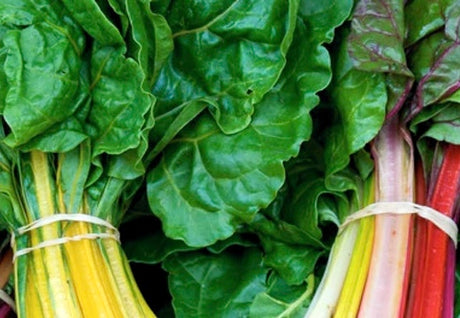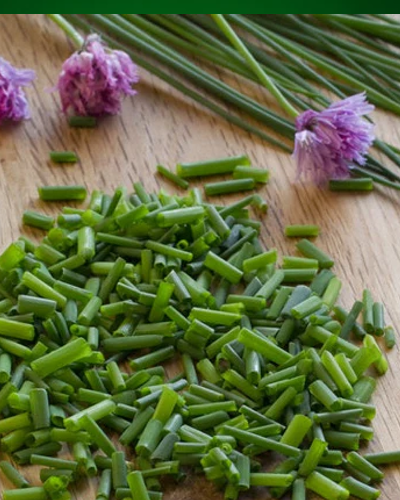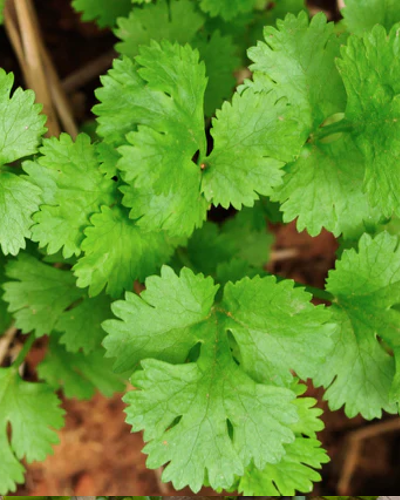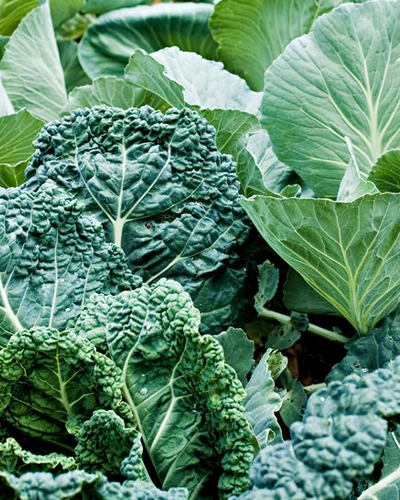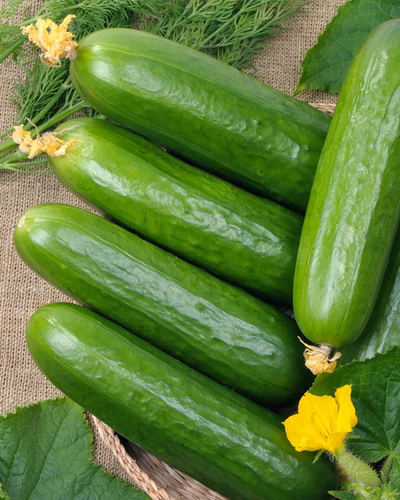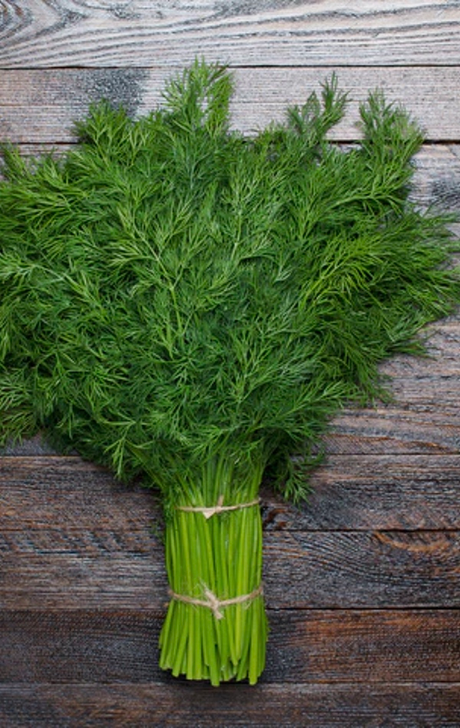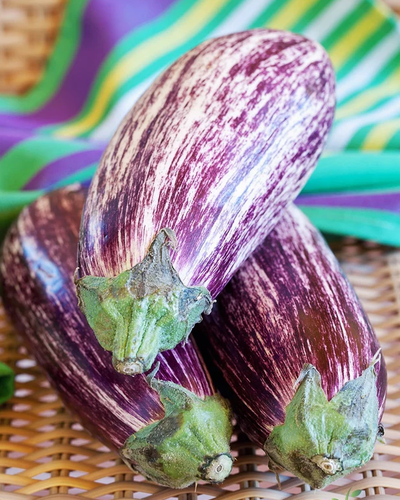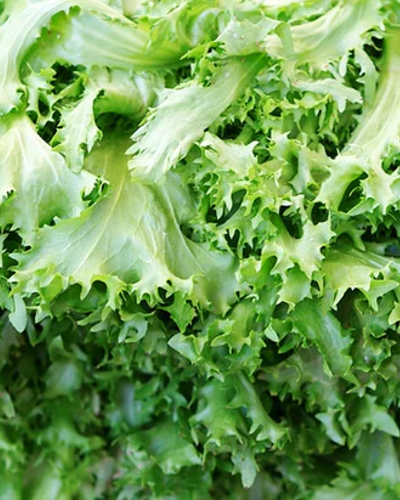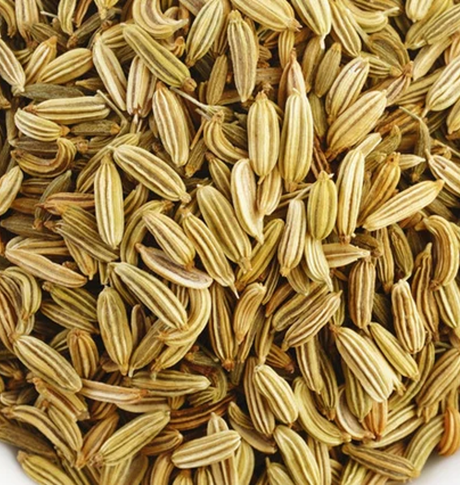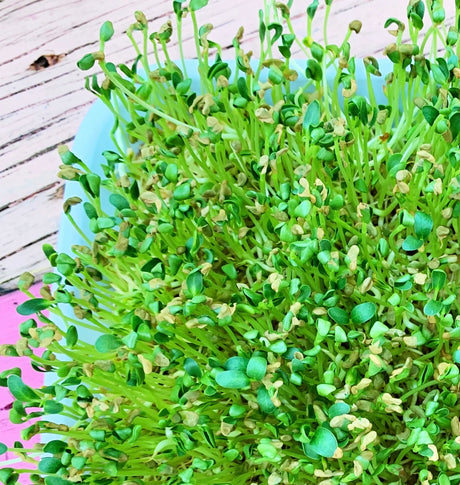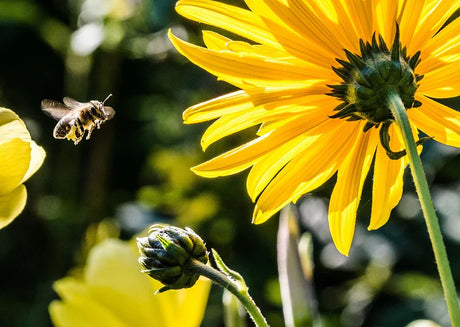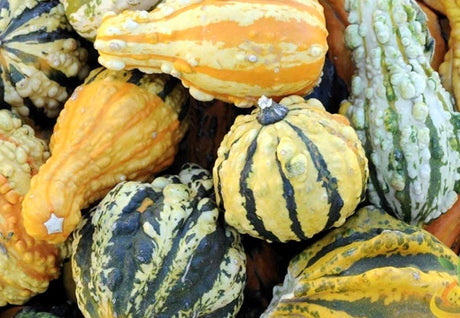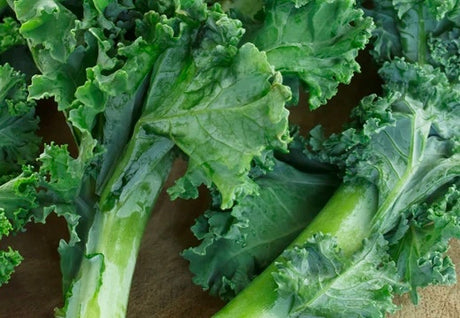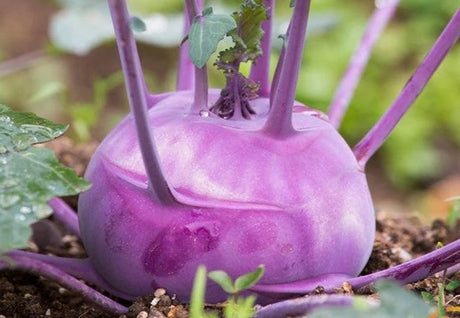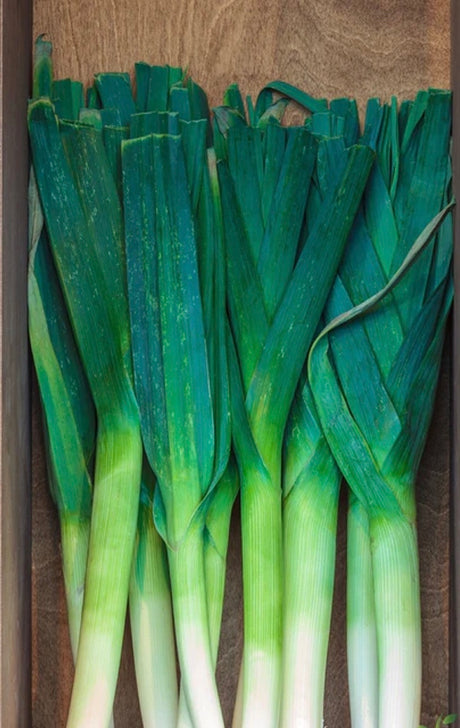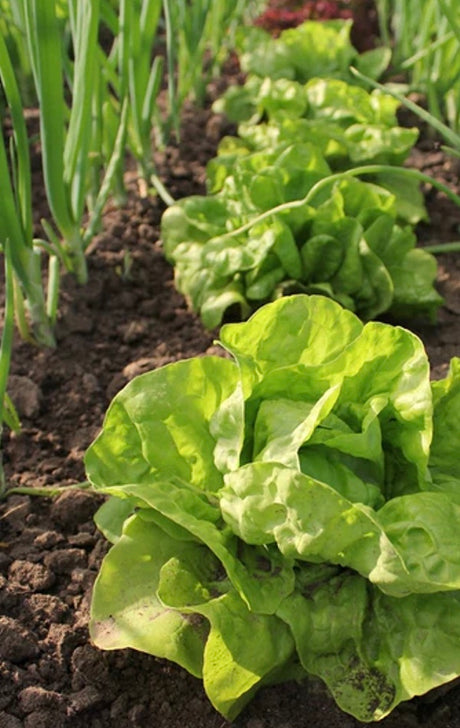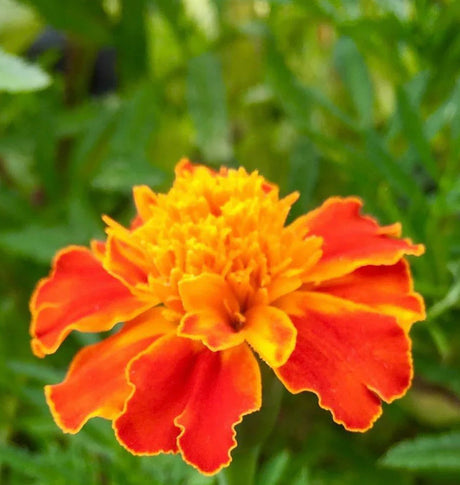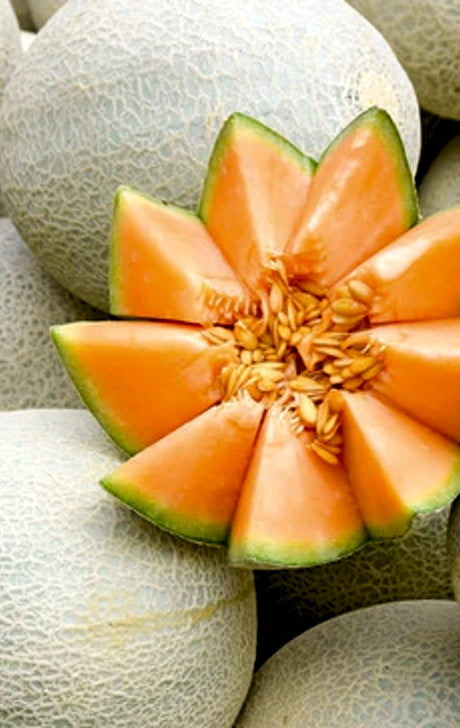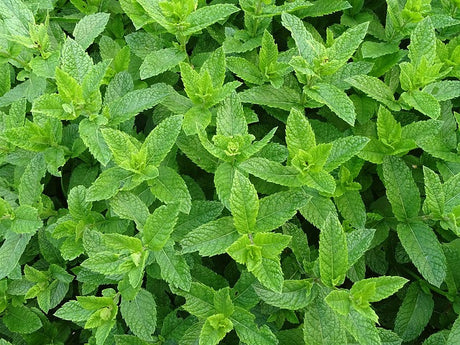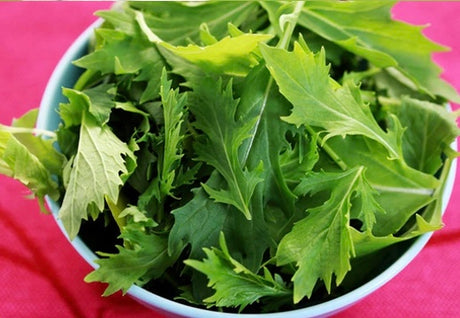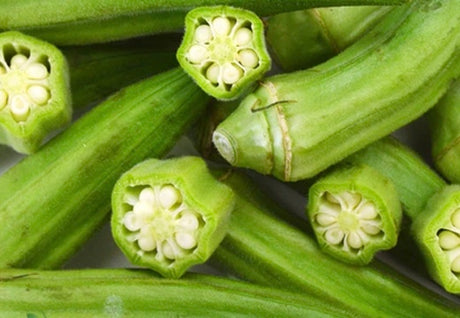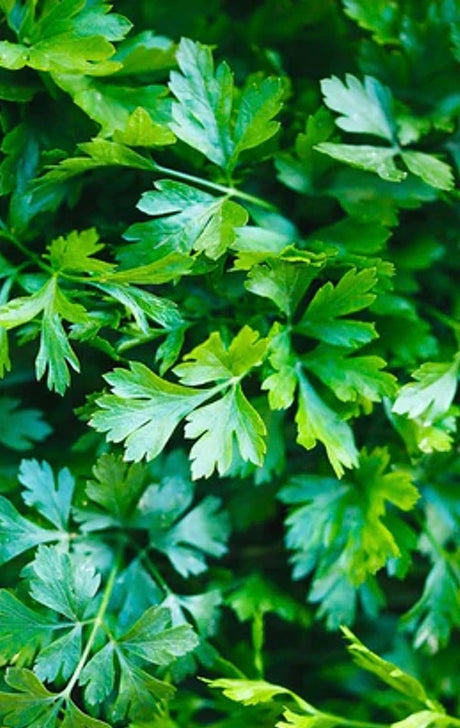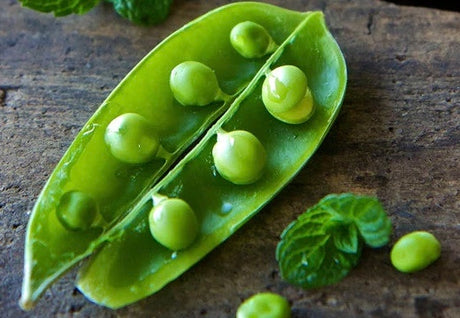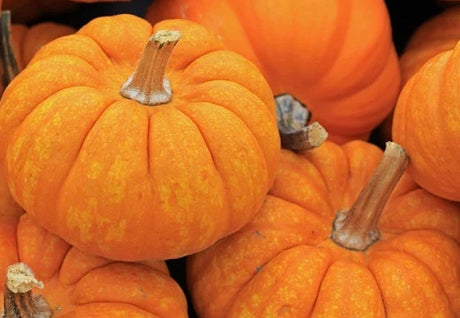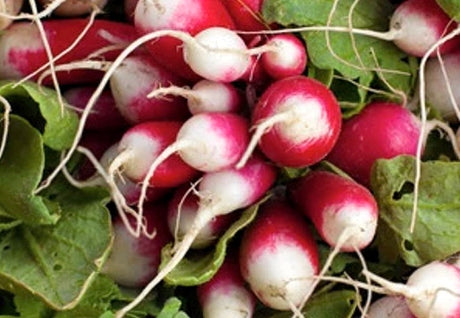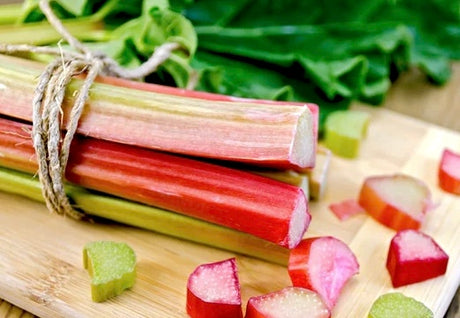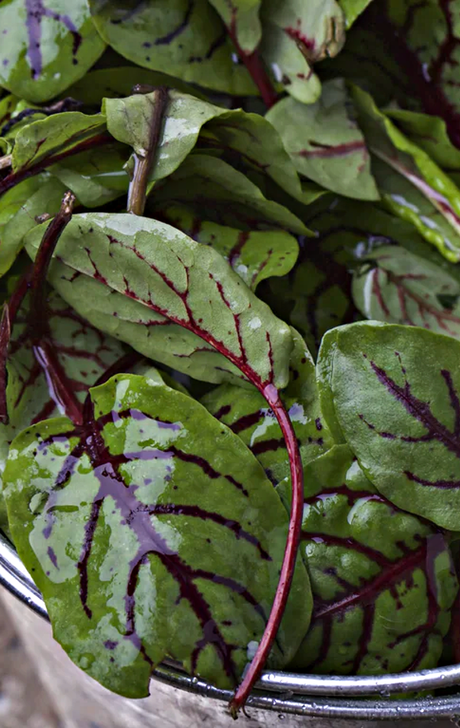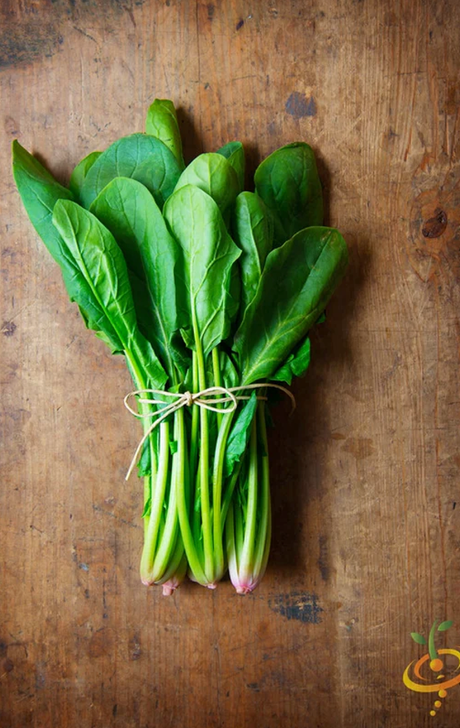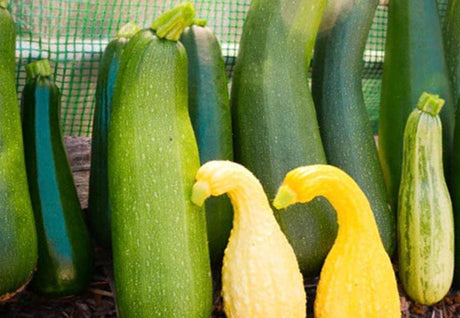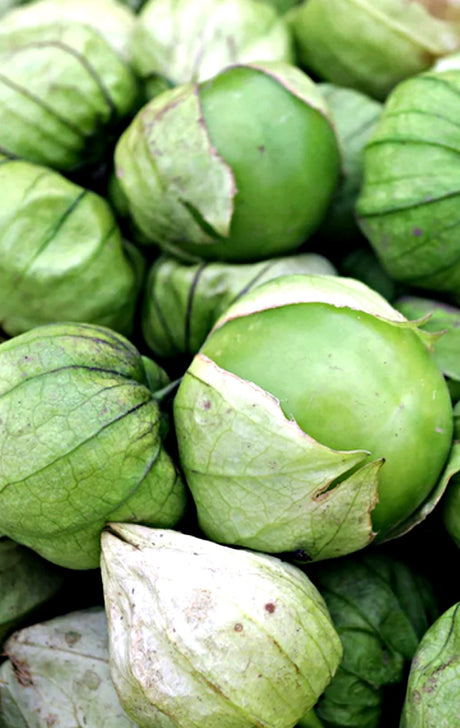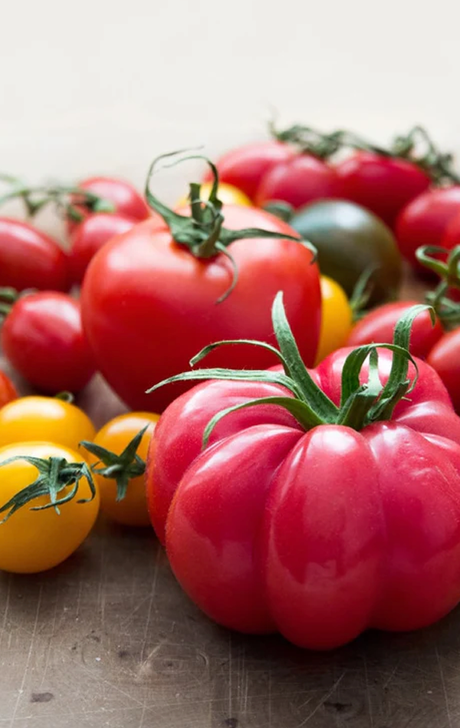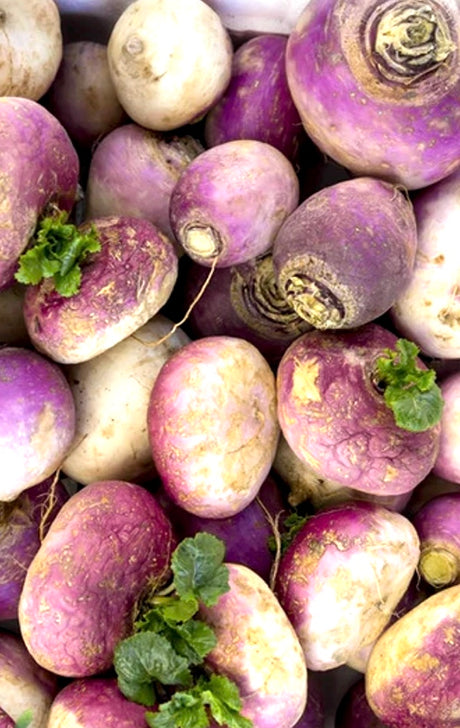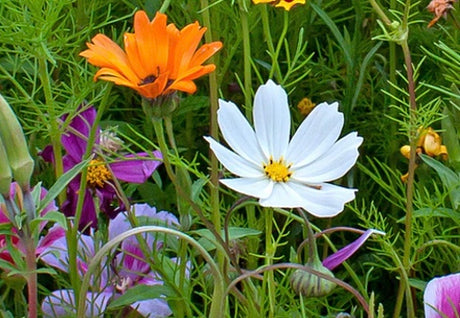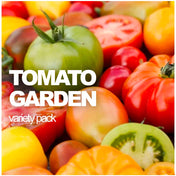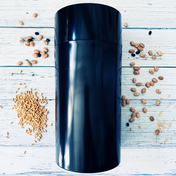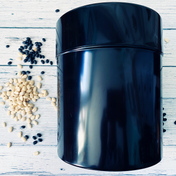Globe Gilia (Queen Anne’s Thimble) Flowers
From $299 USDUnit price /UnavailableDescription
The Globe Gilia (Gilia capitata) is an easy-care drought-tolerant annual. Produces globe-shaped 1"-2" blue-hued flowers on thin stems with lacy foliage that grow 2' to 3' tall. Also called Queen Anne’s Thimble for its resemblance to a pincushion.
- Life cycle: Annual
- Bloom season: Spring, summer
- Attracts: Bees, butterflies, beneficial insects, and other pollinators
- Flower meaning: Affection, beauty, desire, hope, inspiration, love
SEED PLANTING TIPS
- Botanical name: Gilia capitata
- Hardiness zones: 3-10
- Planting season: Spring, fall
- Days to maturity: 60 days
- Cold stratify: Yes
- Depth to plant seeds: 1/8" deep
- Spacing between plants: 6"-8" apart
- Days to germinate (sprout): 14-21 days
- Germination soil temps: 70F-75F
- Soil types: Sandy, loamy, rocky, dry, well-drained
- Soil pH: 6.0-7.0
- Water needs: Low - do not overwater
- Sun needs: Full sun
- Frost tolerant: No
- Drought tolerant: Yes
- Deer resistant: Yes
Xtra-Small Seed Storage Vault (.29 liters/3.75" tall)
$999 USDUnit price /UnavailableDescription

Extra-Small heavy-duty Seed Storage container with vacuum-seal top!- 3-3/4"tall x 3"diameter
- .29 Liters
- Keeps seeds lasting years longer.
- Superior moisture barrier.
- Super water-resistant.
- Pest, insect, and rodent resistant.
- Freezer safe.
Pick another size: ExtraSmall | Small | Medium | Large | Extra-LargePotato (Mid-Season) - Yukon Gem (ORGANIC)
From $1899 USDUnit price /UnavailableDescription
DETAILS
-
Mid-season 80-90 days to maturity.
-
First potato that is blight resistant.
-
Mid-season variety that was bred from Yukon Gold using traditional plant breeding.
-
Round to oval, light yellow skin with pink splashes around the eyes.
-
Much higher yields than Yukon Gold and every bit as good.
NOTE: We do not use chemicals to prevent our potatoes from sprouting. So the seed potatoes you order may have already begun to sprout when they arrive. This is okay-in fact some consider it desirable.
-
Carrot - Lunar White, 12" Long
From $299 USDUnit price /UnavailableDescription
The Lunar White Carrot (Daucus carota) is a creamy-white carrot with a small core and mild, sweet flavor that grows 8"-12" long. Harvest sooner for smaller carrots. Half-hardy to frost and light freezes. Good steamed, roasted, and fresh.
- Sweet, mild flavor
- Size: 8"-12" long
- Days to germinate (sprout): 7-21 days
- Days to maturity: 70-75
- Can be harvested sooner for mini carrots
Good companion plants: Broccoli, Cauliflower, Chives, Lettuce, Onion, Parsley, Peas, Rosemary, Sage, Thyme, Tomato
SEED PLANTING TIPS
- Depth to plant seeds: .25" deep
- Spacing between plants: 2" apart
- Spacing between rows: 18"-24" apart
- Days to germinate (sprout): 7-21 days
- Germination soil temps: 65F-85F
- Soil needs: 6.0-6.8 pH
- Sun needs: Full sun
- Hardiness: Half-hardy to frost and light freezes
- Planting season: Spring, fall
- # of plants per sq. ft.: Appx. 16 plants per sq. ft.
- Days to maturity: 70-75 days
Potato (Early-Season) - Caribe (Organic rounds)
From $799 USDUnit price /UnavailableDescription
DETAILS
Early-season 60-80 to maturity.
A large, uniform tuber with snow white flesh and lavender skin.
Good boiled, steamed or mashed.
It should be eaten first as it does not last in storage.
Resistant to heat, drought, scab and storage rot.
Producing excellent yields, it can be grown almost anywhere.NOTE: We do not use chemicals to prevent our potatoes from sprouting. So the seed potatoes you order may have already begun to sprout when they arrive. This is okay-in fact some consider it desirable.
*NEW!* All-in-One Garlic Garden Variety Pack
From $1345 USD$1794Unit price /UnavailableDescription
NEW! All-in-One Garlic Variety Pack includes an assortment of our 6 most popular garlic varieties. ⓘ Learn the difference between hard-neck and soft-neck
Includes all of the following 6 varieties:
1. Garlic - (Soft Neck) Elephant
- The cloves are very easy-peeling. You'd think you have a giant hard-neck here, but the bulbs keep very well, more like a soft-neck. Elephant Garlic is also popular and profitable market gardeners' crop in some areas.

2. Garlic - (Soft Neck) Inchelium Red (Organic)
- From Inchelium, WA, on the Colville Indian Reservation! The bulbs are large - to 3+ inches in diameter. 8-20 cloves of good size. Mild, but lasting, flavor, with a hint of hot! Dense cloves store well. The flavor can get stronger in storage. This vigorous soft-necked variety won a Rodale taste test of 20 garlic strains - named \"Very Best of the Soft-Necks\"

3. Garlic - (Soft Neck) California Early (Organic)
-
California Early is very adaptable to any climate, and easy to grow. This variety has one of the longest storage life. Flavor is very mild.

4. Garlic - (Soft Neck) Silver Rose (Organic)
-
This heirloom garlic has medium to large bulb. Rose-colored cloves in very smooth bright-white bulbs. Mild flavor.
Beautiful garlic to braid!
The longest-storing garlic we sell.
Fast-growing garlic.
Very popular in western and southern US and in France and Italy.

5. Garlic - (Soft Neck) Nootka (Organic)
-
This heirloom garlic has medium to large bulb. Beautifully bright white skin with light rose-colored streaked cloves Very attractive for braiding. Excellent flavor. Strong flavor. In rich soil, cloves can lose their rosy hue. This variety of garlic has long shelf-life and will store well into next spring or even summer.

6. Garlic - (Soft Neck) Italian Late (Organic)
- Light colored wrappers covering cloves which are generally fat and round. The extra-tight skin makes it a better keeper. This variety matures later than Early Italian Purple and tends to be somewhat smaller then Early Italian Purple as well. Good braiding type.
- The cloves are very easy-peeling. You'd think you have a giant hard-neck here, but the bulbs keep very well, more like a soft-neck. Elephant Garlic is also popular and profitable market gardeners' crop in some areas.
Tomato - Thessaloniki (Indeterminate)
From $299 USDUnit price /UnavailableDescription
The Thessaloniki Tomato is a Greek heirloom. A tomato so epic that Homer could have written an ode to its plump round fruits that ripen from golden yellow to vivid red, high yields in high temps, and a rich, earthy flavor that’s well-balanced between sweet and acidic. This one’s a keeper, both in the garden and on the countertop. By the time you eat a few of these, you may even be able to pronounce it.
- Well-balanced flavor
- Heat tolerant
- Early producer
- Stores well
SEED PLANTING INFO
- Botanical name: Solanum lycopersicum
- Growth type: Indeterminate, trellis support, regular pruning
- Tomato size: Medium
- Depth to plant seeds: .25" deep
- Spacing between plants: 24" apart
- Spacing between rows: 36"-48" apart
- Days to germinate (sprout): 7-14 days
- Germination soil temps: 75F-95F
- Soil needs: 6.0-6.5 pH
- Sun needs: Full sun
- Frost hardy: No
- Planting season: Spring, summer
- # of plants per sq. ft.: Appx. 1 plant per 2 sq. ft.
- Days to maturity: 75-80 days
Click here to view our full Tomato grow guide
Good companion plants: Basil, Borage, Onion, Parsley, Pepper
Onion (Transplants) - OG Sweet Spanish, Yellow (Long Day)
From $199 USDUnit price /UnavailableDescription
Quick Overview
How to Plant Bulb OnionsAn extremely long storing yellow onion. Larger size than most, better uniformity, and higher yield potential. Medium-large, blocky bulbs with dark yellow skin and thin necks that dry quickly. ORGANIC
• Long day• Keeps well when stored
• Great flavor and beautiful color
Onion bulbs are quite hardy and can withstand 20° F frost. They should be set out 4-6 weeks prior to the last expected frost. When your plants arrive they should appear to be quite dry. DO NOT WET THEM NOR STICK THEIR ROOTS IN WATER. Unpack them and store them in a cool, dry place until it is time to plant. They should last about 3 weeks kept this way. Do not worry that your plants seem dry. They will "shoot" new roots and new, green tops as soon as they are planted.
Sprouts/Microgreens - Pea, Brown Speckled
From $299 USDUnit price /UnavailableDescription
- Organic
- Ready to eat as a sprout just a soon as they pop.
- Sweet and delicious in salads and casseroles.
- Day to Maturity | 3-7 days
Follow SeedsNow.com's board Green Pea Sprouts on Pinterest. - From $299 USDUnit price /Unavailable
Description
The Nodding Catchfly (Silene pendula) is a bushy, vigorous, low-growing annual. So named because small flies and gnats get stuck in the sticky seed pod. Produces clusters of charming pink blossoms with notched petals around a light pink center. Grows 6"-10" tall on a nodding stem with hairy, oval foliage. Beautiful cascading over a hanging basket or stone wall.
- Life cycle: Annual
- Bloom season: Spring, summer
- Attracts: Hummingbirds, bees, butterflies, moths, and other pollinators
- Flower meaning: Gentleness, youthful love
SEED PLANTING TIPS
- Botanical name: Silene pendula
- Hardiness zones: 4-8
- Planting season: Spring, fall
- Days to maturity: 60-90 days
- Cold stratify: Yes
- Depth to plant seeds: Lightly cover - seeds need light to germinate
- Spacing between plants: 8"-12" apart
- Days to germinate (sprout): 7-14 days
- Germination soil temps: 60F-70F
- Soil types: Clay, sandy, loamy, moist, well-drained
- Soil pH: 5.5-6.5
- Water needs: Average
- Sun needs: Full sun, part shade
- Frost tolerant: Yes
- Drought tolerant: Yes
- Deer resistant: Yes
- From $299 USDUnit price /Unavailable
Description
The Snow White Carrot (Daucus carota) is a creamy white carrot with a crispy crunch and mild, sweet flavor. Grows 7" long with a tapered root. Harvest sooner for small carrots. Half-hardy to frost and light freezes. Good steamed, roasted, and fresh.
- Sweet and crunchy
- Size: 7" long
- Days to germinate (sprout): 7-21 days
- Days to maturity: 70-75
Good companion plants: Broccoli, Cauliflower, Chives, Lettuce, Onion, Parsley, Peas, Rosemary, Sage, Thyme, Tomato
SEED PLANTING TIPS
- Depth to plant seeds: .25" deep
- Spacing between plants: 2" apart
- Spacing between rows: 18"-24" apart
- Days to germinate (sprout): 7-21 days
- Germination soil temps: 65F-85F
- Soil needs: 6.0-6.8 pH
- Sun needs: Full sun
- Hardiness: Half-hardy to frost and light freezes
- Planting season: Spring, fall
- # of plants per sq. ft.: Appx. 16 plants per sq. ft.
- Days to maturity: 70-75 days
Potato (Early-Season) - Violetta
From $600 USDUnit price /UnavailableDescription
-
Quick Overview
• Disease resistant to common scab
• Purple skin with purple flesh
• Early to harvest
Details
New Variety!
Disease resistant to common scab. Purple skin with purple flesh , 40 days earlier than purple peruvian with smooth skin and shallow eyes. The medium set is over shadowed by its earliness. Medium storage dormancy. Grows best on low nitrogent fields. Purple peruvian say good-bye!
NOTE: We do not use chemicals to prevent our potatoes from sprouting. So the seed potatoes you order may have already begun to sprout when they arrive. This is okay-in fact some consider it desirable.
-
- From $600 USDUnit price /Unavailable
Description
-
Quick Overview
• Disease resistant to common scab, PVY, and tubar blight
• Large oval shaped tuber with red skin and yellow flesh
• Early to harvest
Details
New Variety!
Disease resistant to common scab, PVY, and tubar blight. Large oval shaped tuber with red skin and yellow flesh. Shallow eyed smooth skin with medium tuber set. Early to harvest with average storage dormancy. Bakes well to dress up the plate.
NOTE: We do not use chemicals to prevent our potatoes from sprouting. So the seed potatoes you order may have already begun to sprout when they arrive. This is okay-in fact some consider it desirable.
-
Potato (Early-Season) - Cheshire (Organic rounds)
From $999 USDUnit price /UnavailableDescription
Details
- Early-season 60-80 to maturity.
- A high yielding, early season tuber.
- Dark red skinned with yellow around the eyes and deep yellow flesh.
- This potato is delicious roasted, steamed or baked.
- Eat this tasty tuber first as it does not have the longest shelf life.
NOTE: We do not use chemicals to prevent our potatoes from sprouting. So the seed potatoes you order may have already begun to sprout when they arrive. This is okay-in fact some consider it desirable.
Potato (Mid-Season) - All Red (Organic/Heirloom)
From $999 USDUnit price /UnavailableDescription
DETAILS
-
Mid-season 80-90 days to maturity.
-
These medium to extra-large tubers have smooth, brilliant red skin with medium shallow eyes.
-
Pink swirled flesh that retains its color after cooking.
-
Like most reds, this variety is good for steaming or boiling.
-
Makes an attractive and unique potato salad.
NOTE: We do not use chemicals to prevent our potatoes from sprouting. So the seed potatoes you order may have already begun to sprout when they arrive. This is okay-in fact some consider it desirable.
-
Lettuce - Marvel of Four Seasons
From $399 USDUnit price /UnavailableDescription

Marvel of Four Seasons lettuce plant, also known as Lactuca sativa, is a popular variety of lettuce that is highly sought after by gardeners and salad enthusiasts. This unique lettuce variety is known for its beautiful red and green leaves, making it a visually appealing addition to any garden or salad bowl.
Marvel of Four Seasons lettuce is a cool-season crop that thrives in mild climates and can be grown in both spring and fall. It is a loose-leaf lettuce variety, which means that the leaves grow in a loose, open head rather than forming a tight, compact head like other lettuce varieties.
One of the key features of Marvel of Four Seasons lettuce is its exceptional taste. The leaves have a delicate, buttery flavor with a slight hint of bitterness, making it a versatile ingredient in salads, sandwiches, and wraps. Its crisp texture adds a refreshing crunch to any dish.
Growing Marvel of Four Seasons lettuce is relatively easy, making it a great choice for both beginner and experienced gardeners. It prefers well-drained soil and requires regular watering to keep the soil moist. This lettuce variety can be grown in containers, raised beds, or directly in the ground.
When planting Marvel of Four Seasons lettuce, it is important to sow the seeds thinly and cover them with a thin layer of soil. The seeds should be spaced about 6 inches apart to allow room for the plants to grow. It is recommended to provide the plants with partial shade to protect them from excessive heat.
Harvesting Marvel of Four Seasons lettuce is a rewarding experience. The leaves can be harvested individually as needed or the entire plant can be harvested at once. To harvest the leaves, simply cut them off at the base using a sharp knife or scissors. The plant will continue to produce new leaves, allowing for multiple harvests throughout the growing season.
Marvel of Four Seasons lettuce is not only a delicious and visually appealing addition to your garden, but it is also packed with nutritional benefits. It is a good source of vitamins A and K, as well as folate and fiber. Adding this lettuce variety to your diet can contribute to a healthy and balanced lifestyle.
Whether you are a seasoned gardener or just starting out, Marvel of Four Seasons lettuce is a fantastic choice for your garden. Its beautiful appearance, delicious taste, and nutritional benefits make it a must-have for any lettuce lover. Start growing your own Marvel of Four Seasons lettuce today and enjoy the satisfaction of harvesting your own fresh, homegrown lettuce.
Click here for our complete Lettuce grow guidePotato (Mid-Season) - Red La Soda (Organic/Heirloom)
From $999 USDUnit price /UnavailableDescription
DETAIL
-
This potato with smooth red skin, deep eyes and white flesh is excellent for boiling and making potato salads.
-
Possibly the best storing red; it keeps well into June. It tolerates high temperatures but is susceptible to disease.
-
Excellent harvests.
-
This variety was developed especially for Southern growers, but can be good in the North and South for first-early market potatoes.
NOTE: We do not use chemicals to prevent our potatoes from sprouting. So the seed potatoes you order may have already begun to sprout when they arrive. This is okay-in fact some consider it desirable.
-
Zinnia, California Giant Mix Flowers
From $299 USDUnit price /UnavailableDescription
The California Giant Zinnia (Zinnia elegans) is a popular choice among gardeners due to its vibrant colors and robust growth. This annual flowering plant is known for its large, showy blooms that can reach up to 4 inches in diameter. The California Giant Zinnia is particularly favored for its ability to thrive in a variety of garden settings, making it a versatile addition to any landscape.
One of the key characteristics of the California Giant Zinnia is its impressive height, which can range from 24 to 36 inches. This makes it an excellent choice for creating visual interest in garden beds or as a backdrop for shorter plants. The plant's sturdy stems and broad leaves contribute to its overall resilience, allowing it to withstand various environmental conditions.
In terms of cultivation, the California Giant Zinnia prefers full sun, requiring at least 6 to 8 hours of direct sunlight each day. This exposure not only promotes healthy growth but also enhances the vibrancy of its flowers. The plant thrives in well-drained soil with a pH level between 6.0 and 7.0. Regular watering is essential, particularly during dry spells, but care should be taken to avoid waterlogging, which can lead to root rot.
California Giant Zinnias are also known for their impressive blooming period, which typically lasts from late spring until the first frost. This extended flowering season makes them an ideal choice for gardeners looking to maintain color in their gardens throughout the summer months. Additionally, the flowers are attractive to pollinators, including bees and butterflies, contributing to the overall health of the garden ecosystem.
When it comes to maintenance, deadheading spent blooms can encourage further flowering and promote a bushier growth habit. Fertilization with a balanced, water-soluble fertilizer every 4 to 6 weeks can also enhance growth and flowering potential. It is important to monitor for common pests such as aphids and spider mites, which can affect the health of the plant. Implementing integrated pest management strategies can help mitigate these issues effectively.
In summary, the California Giant Zinnia is a striking and resilient plant that can enhance any garden space. Its vibrant blooms, ease of care, and ability to attract pollinators make it a valuable addition to both ornamental and vegetable gardens. By understanding its growth requirements and maintenance needs, gardeners can successfully cultivate this beautiful flower, contributing to a thriving and colorful garden environment.
SEED PLANTING TIPS
- Botanical name: Zinnia elegans
- Hardiness zones: 2-11
- Planting season: Spring, summer
- Days to maturity: 60-70 days
- Cold stratify: No
- Depth to plant seeds: 1/4" deep
- Spacing between plants: 12"-18" apart
- Days to germinate (sprout): 5-7 days
- Germination soil temps: 70F-75F
- Soil types: Sandy, loamy, rich, moist, well-drained
- Soil pH: 5.5-7.5
- Water needs: Average
- Sun needs: Full sun
- Frost tolerant: No
- Drought tolerant: Yes
- Deer resistant: Yes
- From $399 USDUnit price /Unavailable
Description
The common milkweed (Asclepias Syriaca) is a perennial plant native to North America, known for its distinctive clusters of pink to purple flowers and its ecological significance. This plant typically grows to a height of 3 to 4 feet and thrives in a variety of soil types, preferring well-drained, sandy loam. It is commonly found in fields, roadsides, and disturbed areas, making it an adaptable choice for gardeners looking to enhance biodiversity.
Blooms continuously summer through fall, providing migrating monarchs with nectar snacks for their long journey and a place to lay their eggs. Can be grown as an annual in cooler grow zones. Lovely and long-lasting in cut flower arrangements.
- Life cycle: Herbaceous perennial
- Bloom season: Summer, fall
- Attracts: Beneficial insects, hummingbirds, bees, butterflies, and other pollinators
- Flower meaning: Dignity, freedom, rejection, remembrance, solitude
As a medicinal plant, Milkweed has been used internally to treat diarrhea, gonorrhea, intestinal parasites and worms, pneumonia, spleen inflammation, and stomach tumors, and externally to treat bleeding, boils, corns, dermatitis, eye infections, ringworm, skin parasites, snakebites, sores, warts, and wounds.
⚠️ Although Milkweed is known to be safe when used correctly, all parts of the plant are toxic and may even cause death to people, pets, horses, and livestock if ingested in large quantities. The milky sap is a skin irritant. Do not ingest while pregnant or nursing.
⚠️ Medicinal properties are presented as information only, and are not a recommendation or prescription for use. Consult a medical professional before using any plant medicinally.
NOTE: A parasite, Ophryocystis elektroscirrha (OE), travels with monarchs and is deposited on every plant they visit. In warm grow zones where this non-native milkweed does not die back from a killing frost, the OE parasite can build up and harm the caterpillars that feed on the leaves and the butterflies they become. A continuously blooming milkweed may also encourage the monarchs to dally rather than migrate, which interrupts their reproductive cycle. It’s easy to eliminate both dangers, by cutting your plants to the ground at least once per season.
SEED PLANTING TIPS
- Botanical name: Asclepias curassavica
- Hardiness zones: 8-11
- Planting season: Spring, fall
- Days to maturity: 100-120 days
- Cold stratify: No
- Depth to plant seeds: 1/4" deep - Soaking seeds in warm water overnight aids germination.
- Spacing between plants: 1'-2' apart
- Days to germinate (sprout): 10-21 days
- Germination soil temps: 60F-70F
- Soil types: Clay, caliche, sandy, loamy, silty, rocky, chalky, rich, dry, moist, wet
- Soil pH: 6.1-7.5
- Water needs: Average
- Sun needs: Full sun, part shade
- Frost tolerant: No
- Drought tolerant: Yes
- Deer resistant: Yes
More facts about Milkweed:
- The beautiful monarch butterflies rely on milkweed to lay their eggs upon. Sadly, habitats that naturally support monarchs are becoming fewer in number each year. New urban development & chemically treated "big agriculture" are destroying habitats of milkweed all over the United States.
- Sow in early January for first year blooms.
- From $299 USDUnit price /Unavailable
Description
The Lavender Vera plant, scientifically known as Lavandula angustifolia, is a perennial herb renowned for its aromatic qualities and vibrant purple flowers. This plant is native to the Mediterranean region and has been cultivated for centuries due to its numerous benefits and applications in gardening, aromatherapy, and culinary arts.
One of the primary advantages of incorporating Lavender Vera into a garden is its ability to attract pollinators. Studies indicate that lavender can attract up to 30% more bees and butterflies compared to other flowering plants. This is particularly beneficial for gardeners aiming to enhance biodiversity and support local ecosystems.
Lavender Vera is also known for its drought-resistant properties. Once established, this plant requires minimal water, making it an excellent choice for sustainable gardening practices. Research shows that lavender can thrive in well-drained soils with low moisture levels, which can reduce the overall water consumption in a garden by approximately 20%.
In addition to its ecological benefits, Lavender Vera has a variety of uses in the home. The essential oils extracted from its flowers are widely used in aromatherapy for their calming effects. According to a study published in the Journal of Alternative and Complementary Medicine, inhaling lavender oil can reduce anxiety levels by up to 30% in individuals experiencing stress.
From a culinary perspective, Lavender Vera can be utilized in various recipes, including desserts, teas, and savory dishes. Its unique flavor profile adds a distinct floral note that can enhance the overall taste of a dish. However, it is essential to use culinary-grade lavender to ensure safety and palatability.
When cultivating Lavender Vera, it is crucial to consider its growing conditions. This plant thrives in full sun and well-drained soil, with a pH level between 6.5 and 7.5. Proper spacing is also vital, as mature plants can reach heights of 2 to 3 feet and spread up to 4 feet wide. Adequate air circulation around the plants can help prevent fungal diseases, which are common in humid environments.
In conclusion, the Lavender Vera plant is a valuable addition to any garden. Its ability to attract pollinators, drought-resistant nature, and versatile applications make it an ideal choice for both novice and experienced gardeners. By understanding the specific needs and benefits of Lavender Vera, gardeners can create a thriving and sustainable environment that enhances both aesthetics and functionality.
Follow SeedsNow.com's board Lavendar on Pinterest. Sunflower, All Sorts Surprise Mix Flowers
From $399 USDUnit price /UnavailableDescription
Includes a mix of all sorts of different sunflowers! Be surprised as you watch they grow in your garden.
Amaranth - Tri Color (Joseph's Coat) seeds
From $399 USDUnit price /UnavailableDescription
Amaranthus tricolor, commonly known as Joseph's Coat, is a vibrant and visually striking flowering plant that is often utilized in ornamental gardening. This species is characterized by its broad, colorful leaves that can display a range of hues including red, yellow, and green. The plant typically reaches a height of 2 to 4 feet and can spread up to 3 feet wide, making it a prominent feature in garden landscapes.
One of the notable aspects of Amaranthus tricolor is its adaptability to various soil types. It thrives in well-drained soils and can tolerate poor soil conditions, which makes it an excellent choice for gardeners looking to enhance their landscapes with minimal maintenance. The plant prefers full sun exposure, requiring at least six hours of direct sunlight each day to achieve optimal growth and color vibrancy.
In terms of cultivation, Amaranthus tricolor is relatively easy to grow from seeds. The seeds should be sown directly into the garden after the last frost date, as the plant is sensitive to cold temperatures. Germination typically occurs within 7 to 14 days under suitable conditions. Once established, the plant is drought-tolerant, requiring watering only during prolonged dry spells.
From a nutritional perspective, Amaranthus tricolor is not only ornamental but also edible. The young leaves can be harvested and consumed in salads or cooked as a green vegetable, providing a source of vitamins A and C, as well as essential minerals. This dual-purpose nature enhances its appeal for gardeners interested in both aesthetics and food production.
Furthermore, Amaranthus tricolor attracts beneficial insects, such as pollinators, which can enhance the overall health of the garden ecosystem. The flowers, which are small and clustered, bloom throughout the summer and into the fall, providing a continuous source of color and attracting various species of bees and butterflies.
In conclusion, Amaranthus tricolor is a versatile and attractive addition to any garden. Its vibrant foliage, ease of cultivation, and nutritional benefits make it a valuable choice for both ornamental and edible gardening. Gardeners should consider incorporating this plant into their landscapes to enjoy its beauty and contributions to biodiversity.
Health Benefits of Amaranth
Do you have grey hair? Amaranth helps to prevent premature graying, mainly due to the minerals it contains. It helps to lower bad cholesterol and also can reduce inflammation and ease pain. Especially important for people suffering from diabetes, heart disease, and stroke. Great for tackling high blood pressure and may even help prevent cancer. Don't forget it is a wonderful source of protein.
Ways to Consume Amaranth
Amaranth is a lot like quinoa as far as being a "protein packed" seed. You can roast, pop, or boil these seeds. Use as a breakfast cereal, or combine it with other grains. Amaranth is a wonderful soup thickener because of it's gelatinous quality when cooked. Cook the leaves of the Amaranth plant, similar to how you would cook/use spinach leaves.

See Amaranth Recipes & Growing Tips on our Pinterest Board
- From $299 USDUnit price /Unavailable
Description
The Burpee Golden Beet, a cultivar of the traditional beetroot, is distinguished by its vibrant golden-yellow flesh and sweet flavor. This variety is particularly valued for its unique color, which not only adds visual appeal to dishes but also provides a different taste profile compared to the more common red beet. The golden beet is rich in essential nutrients, including vitamins A and C, potassium, and dietary fiber, making it a beneficial addition to any garden.
When cultivating Burpee Golden Beets, it is essential to consider their growing conditions. These beets thrive in well-drained, loamy soil with a pH level between 6.0 and 7.0. They prefer full sun exposure, requiring at least six hours of direct sunlight daily. The optimal planting time for golden beets is in early spring or late summer, as they are cool-season crops. Planting seeds approximately 1 inch deep and 2 inches apart allows for adequate spacing, which is crucial for healthy root development.
Watering is another critical aspect of growing Burpee Golden Beets. Consistent moisture is necessary, especially during the germination phase, which typically takes 5 to 10 days. Once established, beets require about 1 inch of water per week. However, overwatering should be avoided, as it can lead to root rot and other diseases. Mulching around the plants can help retain soil moisture and suppress weeds, contributing to a healthier growing environment.
Harvesting Burpee Golden Beets is generally recommended when the roots reach a diameter of 1 to 3 inches, typically around 50 to 60 days after planting. At this stage, the beets are tender and flavorful. It is advisable to harvest them before they become too large, as larger beets may develop a woody texture. The greens of the golden beet are also edible and can be harvested and consumed as a nutritious leafy green.
In terms of pest management, Burpee Golden Beets are susceptible to common garden pests such as aphids and leaf miners. Implementing integrated pest management strategies, including crop rotation and the use of beneficial insects, can help mitigate these issues. Additionally, maintaining healthy soil through organic practices can enhance the plants' resilience against pests and diseases.
In conclusion, the Burpee Golden Beet is a rewarding plant for both novice and experienced gardeners. Its unique color, nutritional benefits, and versatility in the kitchen make it an excellent choice for home gardens. By providing the right growing conditions and care, gardeners can enjoy a bountiful harvest of this vibrant vegetable.
Shop all Beet Seeds 📚 Beets Grow Guide - From $299 USDUnit price /Unavailable
Description
Are you looking to add a new pepper plant to your garden? Consider the Marconi pepper plant, a popular choice among gardeners for its mild flavor and versatility in the kitchen. Let's explore the ins and outs of growing this plant in your own backyard.
What are Marconi peppers?
Marconi peppers, also known as Italian frying peppers, are elongated, sweet peppers that are typically harvested when they are green or red. These peppers are prized for their thin walls, making them perfect for sautéing, grilling, or roasting. With a mild, slightly sweet flavor, Marconi peppers are a favorite in Mediterranean cuisine.
How to grow Marconi pepper plants
When planting Marconi pepper seeds, it's important to choose a sunny spot in your garden with well-draining soil. These plants thrive in warm weather, so make sure to plant them after the last frost date in your area. Space the plants about 18 inches apart to allow for proper growth.
Water the plants regularly, ensuring that the soil remains consistently moist but not waterlogged. Fertilize the plants every few weeks with a balanced fertilizer to promote healthy growth. As the peppers begin to develop, provide support for the plants to prevent them from bending or breaking under the weight of the fruit.
Harvesting and using Marconi peppers
Marconi peppers can be harvested when they reach their full size, typically around 6-8 inches in length. You can pick the peppers when they are green for a milder flavor or wait until they turn red for a sweeter taste. Simply cut the peppers from the plant using a pair of scissors or pruning shears.
These versatile peppers can be used in a variety of dishes, from stir-fries and salads to sandwiches and pasta dishes. Roast them for a smoky flavor, or pickle them to enjoy their crisp texture year-round. The possibilities are endless with Marconi peppers in your kitchen!
Are you ready to add the Marconi pepper plant to your garden? With the right care and attention, you can enjoy a bountiful harvest of these delicious peppers throughout the growing season. Happy gardening!
SEED PLANTING TIPS
- Botanical name: Capsicum annuum
- Plant support: Tomato cage or stake
- Depth to plant seeds: .25" deep
- Spacing between plants: 18"-24" apart
- Spacing between rows: 24"-36" apart
- Days to germinate (sprout): 7-21 days
- Germination soil temps: 75F-85F
- Soil needs: 6.0-7.0 pH
- Sun needs: Full sun
- Frost hardy: No
- Planting season: Spring, summer
- # of plants per sq. ft.: Appx. 1 plant per 2 sq. ft.
- Days to maturity: 65-80 days
Good companion plants: Basil, Carrot, Cucumber, Eggplant, Okra, Rosemary, Sage, Squash, Tomato
All Peppers ⟐ Sweet Peppers 📚 Sweet Peppers Grow Guide Potato (Early-Season) - Albertine
From $600 USDUnit price /UnavailableDescription
-
Quick Overview
• Early-season 60-80 to maturity.
• Disease resistant to common scab, black leg, Rhizoctonia, and tuber blight, the trifecta plus one.
• Yellow skin, yellow flesh with smooth skin and shallow eyes.
• Excellent disease resistance.
Details
New Variety!
Disease resistant to common scab, black leg, Rhizoctonia, and tuber blight, the trifecta plus one. Excellent for the the beginning home gardener. Yellow skin, yellow flesh with smooth skin and shallow eyes. Large oval tubers with medium set. It is well worth sacraficing a few potatoes for such excellent disease resistance. Medium storage.
NOTE: We do not use chemicals to prevent our potatoes from sprouting. So the seed potatoes you order may have already begun to sprout when they arrive. This is okay-in fact some consider it desirable.
-
- From $299 USDUnit price /Unavailable
Description
- Produces beautiful purple radishes with a white flesh
- Looks amazing & Great for culinary dishes
- The flesh is crisp and mild in flavor
- Great for selling at farmers markets
- Unique and rare heirloom radish
- Grows well in containers and small spaces
-
Days to Maturity | 25-30 days
Additional DetailsRadishes are rich in ascorbic acid, folic acid, and potassium. They are a good source of vitamin B6, riboflavin, magnesium, copper, and calcium. One cup of sliced red radish bulbs provides approximately 20 calories, largely from carbohydrates
Follow SeedsNow.com's board Radishes on Pinterest. - Produces beautiful purple radishes with a white flesh
Potato (Early-Season) - Malou (Organic/Heirloom)
From $999 USDUnit price /UnavailableDescription
DETAILS
- Early-season 60-80 to maturity.
-
This early season potato produces high yields of uniform, round tubers with bright yellow skin and yellow flesh.
-
Has a delicious creamy texture when roasted, baked, fried or boiled.
-
Resistance to PVY, black leg, tuber blight and rhizoctonia.
-
A great storage potato.
NOTE: We do not use chemicals to prevent our potatoes from sprouting. So the seed potatoes you order may have already begun to sprout when they arrive. This is okay-in fact some consider it desirable.
- Early-season 60-80 to maturity.
Alyssum, Carpet of Snow (Sweet Alyssum) Flowers Seeds
From $399 USDUnit price /UnavailableDescription
Potato (Mid-Season) - Agata (Organic/Heirloom)
From $999 USDUnit price /UnavailableDescription
DETAILS
-
Mid-season 80-90 days to maturity.
Beautiful yellow skin and yellow flesh with a creamy texture when cooked. -
Exceptionally high yields of oval tubers.
-
Early to mid-season maturity and moderate storage.
-
Try this tasty tuber roasted, baked or boiled.
NOTE: We do not use chemicals to prevent our potatoes from sprouting. So the seed potatoes you order may have already begun to sprout when they arrive. This is okay-in fact some consider it desirable.
-
Snapdragon, GIANT Maximum Mix Flowers
From $299 USDUnit price /UnavailableDescription
Onion (Transplants) - Rock, Red (Intermediate Day)
From $199 USDUnit price /UnavailableDescription
Quick Overview
How to Plant Bulb OnionsRed rock is a beautiful red heirloom intermediate day onion. It has a consistent red color throughout, with a medium-to-large bulb size that is slightly flat on top.
• Intermediate Day
• Organic
• Heirloom
• Crisp, mild flavor
Onion bulbs are quite hardy and can withstand 20° F frost. They should be set out 4-6 weeks prior to the last expected frost. When your plants arrive they should appear to be quite dry. DO NOT WET THEM NOR STICK THEIR ROOTS IN WATER. Unpack them and store them in a cool, dry place until it is time to plant. They should last about 3 weeks kept this way. Do not worry that your plants seem dry. They will "shoot" new roots and new, green tops as soon as they are planted.
Potato (Mid-Season) Fingerling - Vermillion
From $999 USD$1199Unit price /UnavailableDescription
Details
- Long, oval tuber with red skin and flesh.
- Suitable for a wide range of cooking with a creamy texture and beautiful unique color.
- Resistant to virus, splitting and powdery scab.
-
Moderate storage.
We do not use chemicals to prevent our potatoes from sprouting. So the seed potatoes you order may have already begun to sprout when they arrive. This is okay-in fact some consider it desirable.
Potato (Late-Season) - Defender
From $999 USD$1199Unit price /UnavailableDescription
DETAILS
- Late-season 100-120 days to maturity.
- First late blight resistant russet to be released.
- This late season potato is high yielding, lightly russeted, suitable for frying and is excellent as a fresh market baker.
- Oblong with white flesh.
-
Stores well.
NOTE: We do not use chemicals to prevent our potatoes from sprouting. So the seed potatoes you order may have already begun to sprout when they arrive. This is okay-in fact some consider it desirable.
All-in-One Edible Flowers Variety Pack
$3999 USDUnit price /UnavailableDescription
All-in-One Edible Flower Variety Pack includes an assortment of the most popular edible flowers you can grow in your garden.
Nothing will impress your friends and family like sprinkling some colorful flowers into a salad, onto pastries or even as a garnish in their favorite drinks. Edible flowers will add a beautiful splash of color to many dishes and they are readily available, when you're growing them right in your own garden.
🐝 This mix is also pollinator friendly. These flowers will help attract beneficial pollinators such as bees, butterflies, ladybugs, and more to your garden. Not only will you help provide nectar for friendly pollinators in your garden, but you'll have fragrant, and delicious blooms that you can enjoy adding to your favorite culinary dishes. They look great, and taste great, too.
*Individually packaged and labeled in high quality re-sealable moisture proof packaging 🌼🌸

1. Anise (Aniseed)

2. Aster, New England
-
The New England Aster (Symphyotrichum novae-angliae), also called Michaelmas daisy, offers gorgeous 1.5" blooms in vibrant shades of purple, pink, or white. Long daisy-like petals grow around a yellow center on a 3'-6' sturdy, hairy, leafy stem. A sweet show in the garden or in a vase or on a dinner plate!

3. Aster, Smooth Blue
-
The Smooth Blue Aster (Symphyotrichum laeve) bursts out gorgeous star-like violet-blue blooms with long smooth petals around a yellow center. Grows on a 2'-3' sturdy stem that also takes on a blue hue. This frost-tolerant flower can bloom through Thanksgiving.

4. Borage (Starflower)
-
Borage, also called Starflower, is a fast-growing flowering herb with bright blue star-shaped flowers and fuzzy stems and leaves, all edible and they taste like cucumber. Grows 1'-3' tall and reseeds liberally, so it can become invasive. Use the young leaves like spinach and the sweet little flowers as a charming garnish on salads and cakes, or frozen into ice cubes. Easy to dry and use as a refreshing herbal tea.

5. Chamomile
-
Roman Chamomile, also called English Chamomile, has been cultivated as a medicinal herb since Medieval times. This hardy, aromatic, mat-forming ground-cover perennial in the daisy family produces small white flowers with large yellow solid cone centers and aromatic, fern-like foliage. Easily spreads through both reseeding and creeping roots, and can become invasive. Use it to fill in space between stones or pavers, or create a fragrant, low-maintenance “chamomile lawn” like the royals do at Buckingham Palace. Both the apple-scented flowers and stems are used fresh or dried, and steeped into a calming herbal tea sipped before beddy-bye time.

6. Daisy, Shasta
-
The Shasta Daisy (Leucanthemum x superbum) is a drought-tolerant perennial. Produces large 2" blossoms with long bright white petals around a golden yellow center. Grows 2'-4' tall on thin stems with narrow, serrated, dark green foliage. Long lasting in the garden and as a cut flower.

7. Hollyhocks
-
The spectacular Indian Spring Hollyhock Mix (Alcea rosea) produces towering spikes that can grow to 9' tall with saucer-sized blooms in shades of rose and crimson. Heat- and cold-tolerant, this biennial blooms its first year. Prefers full sun, but can tolerate part shade, even under a Black Walnut tree. The leaves, buds, and petals are all edible!

8. Marigold
-
These Sparky Marigold flowers are bright, bold, beautiful & delicious!
Colors range from orange, red, and yellow. Grows only 12" - 14" tall. Also popular for attracting butterflies, bees, and other beneficial pollinators. Sparky is easy to grow and will grow all summer. To eat, just remove the petal from the base/head and enjoy!

9. Nasturtium, Alaska Mix
-
The Nasturtium Alaska Mix includes a mix of gold, salmon, orange, and deep red/purple colored flowers. Nasturtium flowers are one of the most popular edible flowers grown in home gardens. The petals have a slight peppery taste, and the seeds and leaves are also edible! You can even use the seeds as an alternative to capers!

10. Nasturtium, Dwarf Jewel
-
The Dwarf Jewel Nasturtium is a fragrant colorful mix of bright orange and yellow flowers in a compact plant usually getting no taller than 12 inches.

11. Nasturtium, Glorious Gleam
-
The Glorious Gleam Nasturtium flower is one of the most beautiful. The petals have a fresh peppery taste, and the seeds and leaves are also edible! You can even use the seeds as an alternative to capers.
Not only are the flowers pretty, Nasturtiums are great companion plants! They are also known to deter aphids, whiteflies, cucumber beetles & more.

12. Nasturtium, Peach Melba
-
The Peach Melba Nasturtium variety produces cream-like, yellow petals with splashes of darker red in the center. Compact in size with deep blue/green foliage. These vivid yellow edible flowers will brighten up any culinary creation.

13. Rosemary
-
The Rosemary plant produces some really delicious little blue flowers. Just remove the flowers from the stems and then sprinkle a few onto your dinner plate or salad.

14. Sweet Woodruff
-
Sweet Woodruff, also called Sweet-Scented Bedstraw, is a fast-growing, mat-forming herb and groundcover with dark green leaves and small, white, waxy, star-shaped flowers that bloom in spring. When crushed or cut, and especially dried, it has a grassy vanilla fragrance. Prefers partial to full shade, even under a Black Walnut tree. Add the leaves to fruit salads, jellies, and herbal teas, and use the flowers as an adorable and edible garnish. Reseeding and shallow runner roots enable it to spread easily.

15. Sunflower, Maximillian
-
The Maximillian Sunflower (Helianthus maximiliani) is a drought-tolerant perennial. Produces a 3"-5" blossom with veined, pointed bright yellow petals around a dark golden center. Grows 3'-10' tall on branching, hairy stems with multiple blooms per stem, and long, narrow, drooping foliage. Bold, robust, and cheerful.
IMPORTANT: Always seek advice from a professional before growing and/or consuming seeds and/or plants for medicinal purposes.
-
- From $399 USDUnit price /Unavailable
Description
- From $299 USDUnit price /Unavailable
Description
The Foxglove flower (Digitalis purpurea) is a dramatic biennial. Produces towering 2'-3' spires of bell-shaped blossoms in shades of pink, purple, and white, often with contrasting speckles. Grows 3'-5' tall on sturdy stems with lance-shaped foliage. Perfect for a cottage garden.
Compounds found in the leaves are used to make the heart drug Digoxin, but the entire plant is poisonous and should not be ingested.
- Life cycle: Biennial
- Bloom season: Spring, summer
- Attracts: Birds, hummingbirds, bees, butterflies, and other pollinators
- Flower meaning: Ambition, creativity, energy, insincerity, intuition, pride
SEED PLANTING TIPS
- Botanical name: Digitalis purpurea
- Hardiness zones: 4-9
- Planting season: Spring, summer, fall
- Days to maturity: 2nd year
- Cold stratify: Yes
- Depth to plant seeds: Lightly cover - seeds need light to germinate
- Spacing between plants:18"-24" apart
- Days to germinate (sprout): 20-30 days
- Germination soil temps: 65F-70F
- Soil types: Loamy, rich, well-drained
- Soil pH: 5.5-6.5
- Water needs: Average
- Sun needs: Full sun, part shade
- Frost tolerant: Yes
- Drought tolerant: No
- Deer resistant: Yes
Onion (Transplants) - Grano, White (Short Day)
From $199 USDUnit price /UnavailableDescription
Quick Overview
How to Plant Bulb OnionsA beautiful white heirloom short day onion. It has a mild and crisp flavor,great to liven up any dish! This also is a favorite canning and matures in approx. 110 days.
• Short Day
• Organic
• Heirloom
• Crisp, mild flavor
Onion bulbs are quite hardy and can withstand 20° F frost. They should be set out 4-6 weeks prior to the last expected frost. When your plants arrive they should appear to be quite dry. DO NOT WET THEM NOR STICK THEIR ROOTS IN WATER. Unpack them and store them in a cool, dry place until it is time to plant. They should last about 3 weeks kept this way. Do not worry that your plants seem dry. They will "shoot" new roots and new, green tops as soon as they are planted.
Potato (Mid-Season) - Chieftain (Organic/Heirloom)
From $999 USDUnit price /UnavailableDescription
DETAIL
-
Mid-season 80-90 days to maturity.
-
A smooth red-skinned slightly oval tuber with shallow eyes and white flesh.
-
Medium size and very good flavor.
-
This variety is resistant to scab and late blight and does better in clay soils than most other reds.
-
High overall yields from a spreading plant with attractive light-violet blossoms.
NOTE: We do not use chemicals to prevent our potatoes from sprouting. So the seed potatoes you order may have already begun to sprout when they arrive. This is okay-in fact some consider it desirable.
-
Potato (Early-Season) - Jester (Organic rounds)
From $999 USDUnit price /UnavailableDescription
Details
- Early-season 60-80 to maturity.
- Purple skin with yellow around the eyes and variegated purple and yellow flesh.
- Produces small round tubers that are perfect for the home gardener.
- Good for salads or roasting.
- Sensitive to common scab.
NOTE: We do not use chemicals to prevent our potatoes from sprouting. So the seed potatoes you order may have already begun to sprout when they arrive. This is okay-in fact some consider it desirable.
- Early-season 60-80 to maturity.
- From $299 USDUnit price /Unavailable
Description
The Luminosa Zinnia, a member of the Asteraceae family, is renowned for its striking blooms and resilience in various garden settings. This annual plant is characterized by its vibrant colors, which can range from bright pinks to deep oranges and yellows. The Luminosa Zinnia is particularly valued for its ability to attract pollinators, such as bees and butterflies, making it an excellent choice for gardeners interested in promoting biodiversity.
One of the key advantages of the Luminosa Zinnia is its adaptability to different soil types. It thrives in well-drained soil with a pH ranging from 6.0 to 7.0. This plant prefers full sun exposure, requiring at least six hours of direct sunlight daily. In optimal conditions, Luminosa Zinnias can grow to a height of 18 to 24 inches, with a spread of approximately 12 to 18 inches, making them suitable for borders, containers, or as focal points in garden beds.
In terms of maintenance, Luminosa Zinnias are relatively low-maintenance. They require regular watering, particularly during dry spells, but it is essential to avoid waterlogging, which can lead to root rot. Fertilization can enhance blooming, with a balanced fertilizer applied every four to six weeks during the growing season. Deadheading spent flowers will encourage continuous blooming, extending the flowering period from summer into fall.
Moreover, the Luminosa Zinnia is resistant to many common garden pests and diseases, including powdery mildew and aphids. This resilience makes it an ideal choice for novice gardeners or those looking to minimize chemical interventions in their gardening practices. The plant's robust nature allows it to withstand varying weather conditions, including heat and drought, further contributing to its popularity.
In summary, the Luminosa Zinnia is an excellent addition to any garden, offering vibrant colors, ease of care, and ecological benefits. Its ability to attract pollinators and withstand adverse conditions makes it a valuable choice for both aesthetic and environmental purposes. Gardeners seeking to enhance their outdoor spaces should consider incorporating this hardy and beautiful plant into their landscape design.
SEED PLANTING TIPS
- Botanical name: Zinnia elegans
- Hardiness zones: 2-11
- Planting season: Spring, summer
- Days to maturity: 60-70 days
- Cold stratify: No
- Depth to plant seeds: 1/4" deep
- Spacing between plants: 12"-18" apart
- Days to germinate (sprout): 5-7 days
- Germination soil temps: 70F-75F
- Soil types: Sandy, loamy, rich, moist, well-drained
- Soil pH: 5.5-7.5
- Water needs: Average
- Sun needs: Full sun
- Frost tolerant: No
- Drought tolerant: Yes
- Deer resistant: Yes
Hollyhock, Summer Carnival Mix Flowers
From $329 USDUnit price /UnavailableDescription
This Summer Carnival Mix (Alcea rosea) produces towering spikes that can grow to 9' tall with saucer-sized blooms in all sorts of different colors.
Heat and cold-tolerant, this biennial blooms its first year. Prefers full sun, but can tolerate part shade, even under a Black Walnut tree. The leaves, buds, and petals are edible.
- Life cycle: Biennial
- Bloom season: Summer, fall
- Attracts: Birds, hummingbirds, bees, butterflies, and other pollinators
- Flower meaning: Abundance, ambition, femininity, fertility, fruitfulness
SEED PLANTING TIPS
- Botanical name: Alcea rosea
- Hardiness zones: 2-10
- Planting season: Summer, fall
- Days to maturity: 2nd year
- Cold stratify: Yes
- Depth to plant seeds: Lightly cover - seeds need light to germinate
- Depth to plant seeds: Surface sow
- Spacing between plants: 18"-36" apart
- Days to germinate (sprout): 10-21 days
- Germination soil temps: 60F-70F
- Soil types: Sandy, loamy, chalky, rich, moist, well-drained
- Soil pH: 6.0-8.0
- Water needs: Average
- Sun needs: Full sun, part shade
- Frost tolerant: Yes
- Drought tolerant: Yes
- Deer resistant: Yes
Onion (Transplants) - OG WALLA WALLA (Long Day)
From $199 USDUnit price /UnavailableDescription
Quick Overview
ORGANIC For generations this variety has been the pride of Washington State's onion producing region. This famous Northwest gourmet sweet onion can be grown from seed. In long and intermediate day areas where temperatures do not drop below -10 degrees. They can be planted between August 15th and September 1st and overwintered under a light mulch for harvest the following late June or early July. For colder areas it's best to raise seedlings and set out transplants in early to mid April. Not a storage onion.How to Plant Bulb Onions
Onion bulbs are quite hardy and can withstand 20° F frost. They should be set out 4-6 weeks prior to the last expected frost. When your plants arrive they should appear to be quite dry. DO NOT WET THEM NOR STICK THEIR ROOTS IN WATER. Unpack them and store them in a cool, dry place until it is time to plant. They should last about 3 weeks kept this way. Do not worry that your plants seem dry. They will "shoot" new roots and new, green tops as soon as they are planted. Be sure to specify on your order when you want your plants to arrive.
Onion - Grano, White (Short Day)
From $299 USDUnit price /UnavailableDescription
-
White Grano onions are medium-sized white onions
- A perfect variety for slicing and canning
- A crisp and mild flavored onion
- Short day onion
-
Days to Maturity | 120 days
Onion Seeds | Onions are easy to grow, have a fairly short growing period and take up little space in the garden. Plant onions 1/4 inch deep and 3 to 4 inches apart in double rows, leaving 6 to 10 inches between rows.
Click here for complete Onion grow guide
-
White Grano onions are medium-sized white onions
- From $299 USDUnit price /Unavailable
Description
The Cherry Queen Zinnia (Zinnia elegans) is a vibrant and popular flowering plant known for its striking appearance and ease of cultivation. This annual flower is characterized by its large, daisy-like blooms that can reach up to 4 inches in diameter. The Cherry Queen variety showcases a rich, cherry-red color that can add a bold splash to any garden setting.
These flowers thrive in full sun and are well-suited for USDA hardiness zones 3 to 10. They prefer well-drained soil and can tolerate drought conditions once established, making them an excellent choice for gardeners looking for low-maintenance options. Zinnias are also known for their ability to attract pollinators, such as bees and butterflies, contributing to the overall health of the garden ecosystem.
In terms of growth, Cherry Queen Zinnias typically reach a height of 24 to 36 inches. They can be planted directly in the garden after the last frost or started indoors and transplanted later. The seeds germinate quickly, usually within 7 to 10 days, and the plants bloom from mid-summer until the first frost, providing a long-lasting display of color.
Cherry Queen Zinnias are also valued for their cut flower potential. The sturdy stems and vibrant blooms make them ideal for floral arrangements, and they can last up to a week in a vase when properly cared for. This versatility makes them a favorite among both home gardeners and professional florists.
In summary, the Cherry Queen Zinnia is an excellent addition to any garden. With its stunning color, ease of care, and ability to attract beneficial insects, it not only enhances the aesthetic appeal of the garden but also supports biodiversity. For optimal growth, ensure they are planted in a sunny location with well-drained soil, and enjoy the vibrant blooms throughout the growing season.
SEED PLANTING TIPS
- Botanical name: Zinnia elegans
- Hardiness zones: 2-11
- Planting season: Spring, summer
- Days to maturity: 60-70 days
- Cold stratify: No
- Depth to plant seeds: 1/4" deep
- Spacing between plants: 12"-18" apart
- Days to germinate (sprout): 5-7 days
- Germination soil temps: 70F-75F
- Soil types: Sandy, loamy, rich, moist, well-drained
- Soil pH: 6.0-7.0
- Water needs: Average
- Sun needs: Full sun
- Frost tolerant: No
- Drought tolerant: Yes
- Deer resistant: Yes
Onion (Transplants) - OG Ruby Red (Long Day)
From $199 USDUnit price /UnavailableDescription
Quick Overview
A long day variety that is small and flat with a ruby red skin. An excellent, unique flavor that can be added to any dish. Sure to be your new favorite! ORGANICHow to Plant Bulb Onions
Onion bulbs are quite hardy and can withstand 20° F frost. They should be set out 4-6 weeks prior to the last expected frost. When your plants arrive they should appear to be quite dry. DO NOT WET THEM NOR STICK THEIR ROOTS IN WATER. Unpack them and store them in a cool, dry place until it is time to plant. They should last about 3 weeks kept this way. Do not worry that your plants seem dry. They will "shoot" new roots and new, green tops as soon as they are planted. Be sure to specify on your order when you want your plants to arrive.
Carrot - Scarlet Nantes, 6-7" Long
From $299 USDUnit price /UnavailableDescription
The Scarlet Nantes carrot (Daucus carota subsp. sativus) is a popular variety among home gardeners due to its exceptional flavor, vibrant color, and adaptability to various growing conditions. This heirloom cultivar is characterized by its cylindrical shape, smooth skin, and sweet, crisp texture, making it an ideal choice for both fresh consumption and culinary applications.
Scarlet Nantes carrots typically reach a length of 6 to 7 inches and are known for their bright orange hue, which is indicative of their high beta-carotene content. Beta-carotene is a precursor to vitamin A, essential for maintaining healthy vision, immune function, and skin health. Studies have shown that orange carrots, such as Scarlet Nantes, can contain up to 14,000 micrograms of beta-carotene per 100 grams, contributing significantly to daily nutritional requirements.
This variety thrives in well-drained, loamy soil with a pH range of 6.0 to 6.8. Carrots prefer full sun, requiring at least 6 hours of direct sunlight daily for optimal growth. When planting Scarlet Nantes carrots, it is advisable to sow seeds directly into the garden bed, as they do not transplant well. The seeds should be sown approximately ¼ to ½ inch deep and spaced 2 to 4 inches apart to allow for proper root development.
Scarlet Nantes carrots have a relatively short growing season, typically maturing in about 70 to 80 days. Regular watering is crucial during the germination phase, as consistent moisture helps to ensure even seedling emergence. Once established, these carrots are relatively drought-tolerant, but maintaining adequate soil moisture will enhance their sweetness and overall quality.
One of the notable advantages of growing Scarlet Nantes carrots is their resistance to common pests and diseases. This variety is less susceptible to carrot rust flies and other root pests, making it an excellent choice for organic gardening practices. Additionally, the robust nature of the Scarlet Nantes allows for extended harvest periods, as they can be left in the ground until needed, provided that the soil does not freeze.
In conclusion, the Scarlet Nantes carrot plant is a valuable addition to any garden, offering both nutritional benefits and culinary versatility. By understanding its growth requirements and characteristics, gardeners can successfully cultivate this flavorful variety, contributing to a sustainable and health-conscious lifestyle.
Click here for complete Carrot grow guide
- From $299 USDUnit price /Unavailable
Description
Baby blue eyes (Nemophila menziesii), is a flowering plant native to California and the Pacific Northwest. This annual plant is part of the Boraginaceae family and is recognized for its delicate, bright blue flowers that bloom in spring. The plant typically grows to a height of 6 to 12 inches and features lobed, green leaves that provide a lush backdrop for its striking blooms.
The Nemophila menziesii is valued not only for its aesthetic appeal but also for its ecological benefits. The flowers are known to have a high nectar content, which supports local bee populations. Additionally, the plant's low growth habit makes it an effective ground cover, helping to suppress weeds and retain soil moisture.
continue shopping
🔥 TRENDING NOW
View allALL-IN-1 COLLECTIONS
View allSUPPLIES & MORE
View all⭐ FEATURED COLLECTIONS
View all products listed A-Zcontinue shopping

